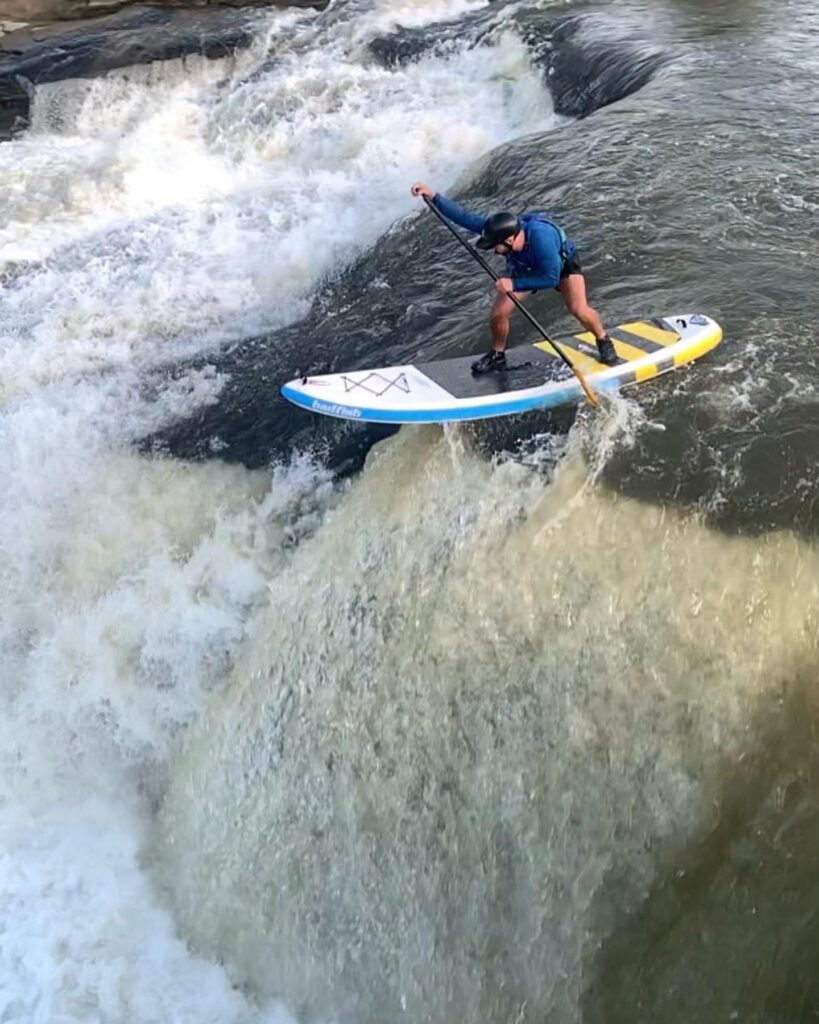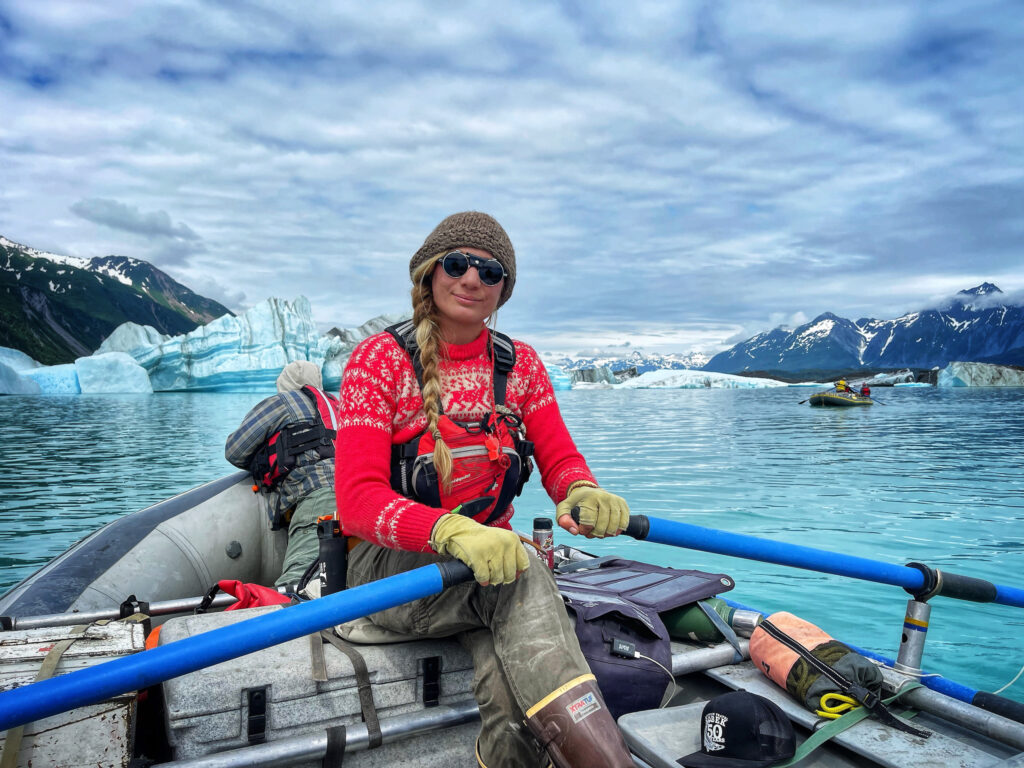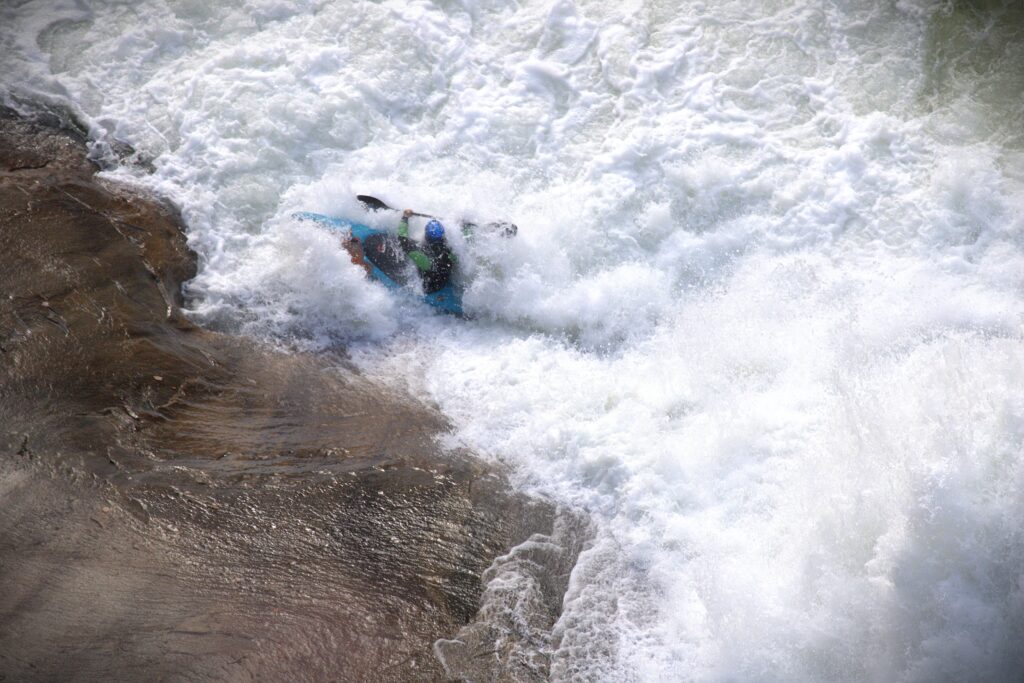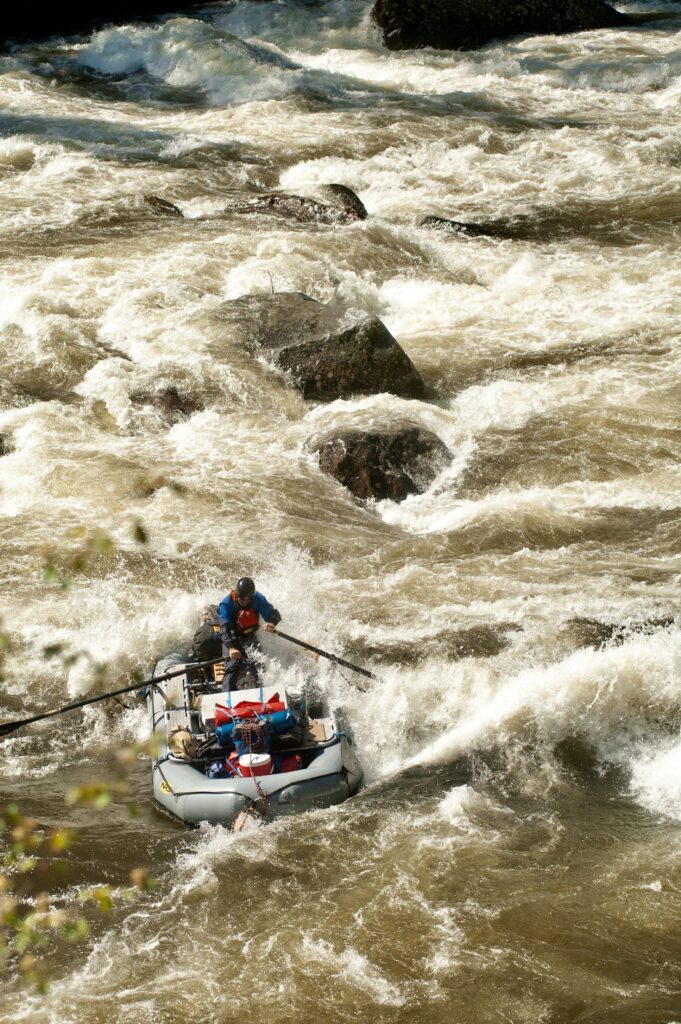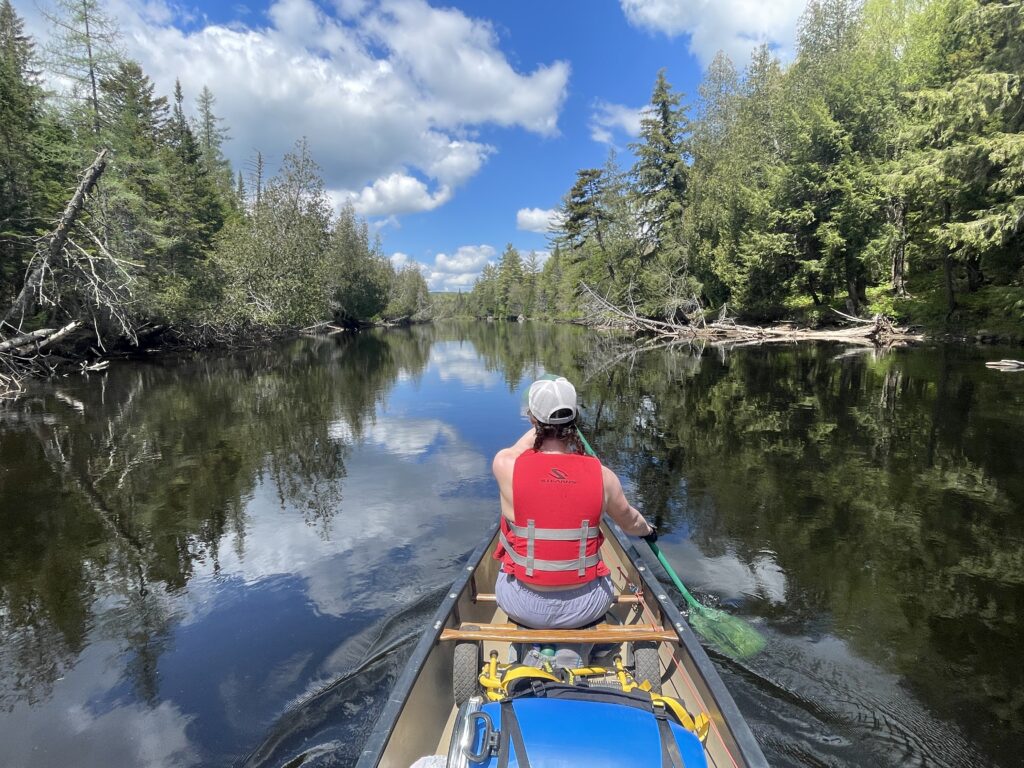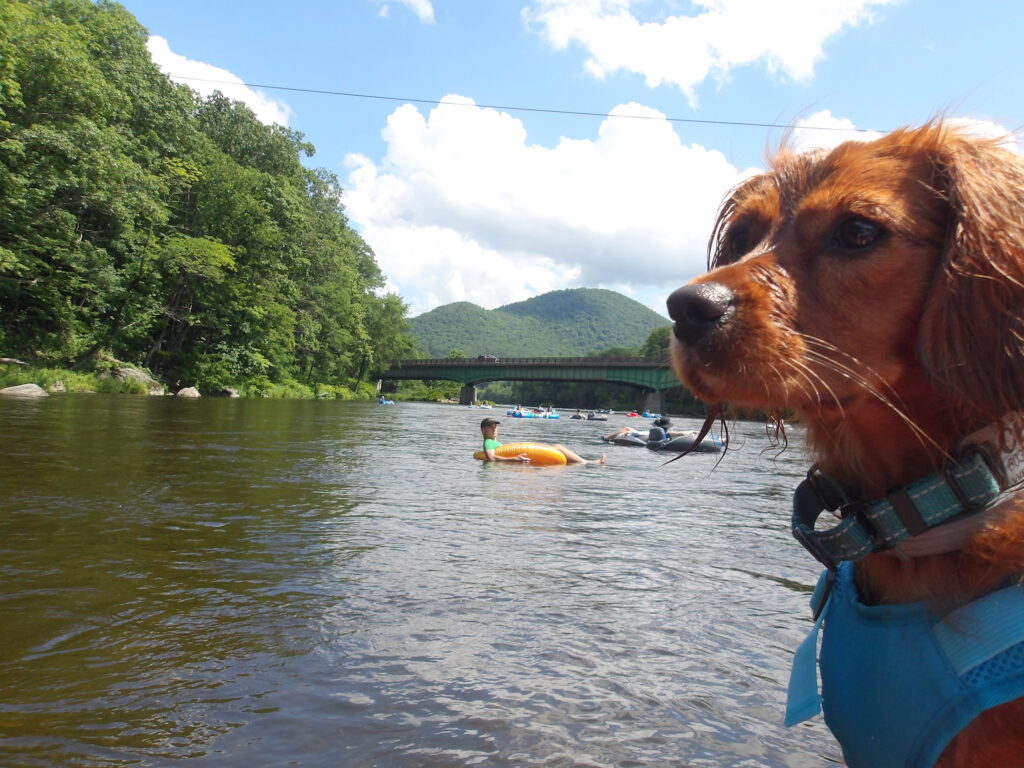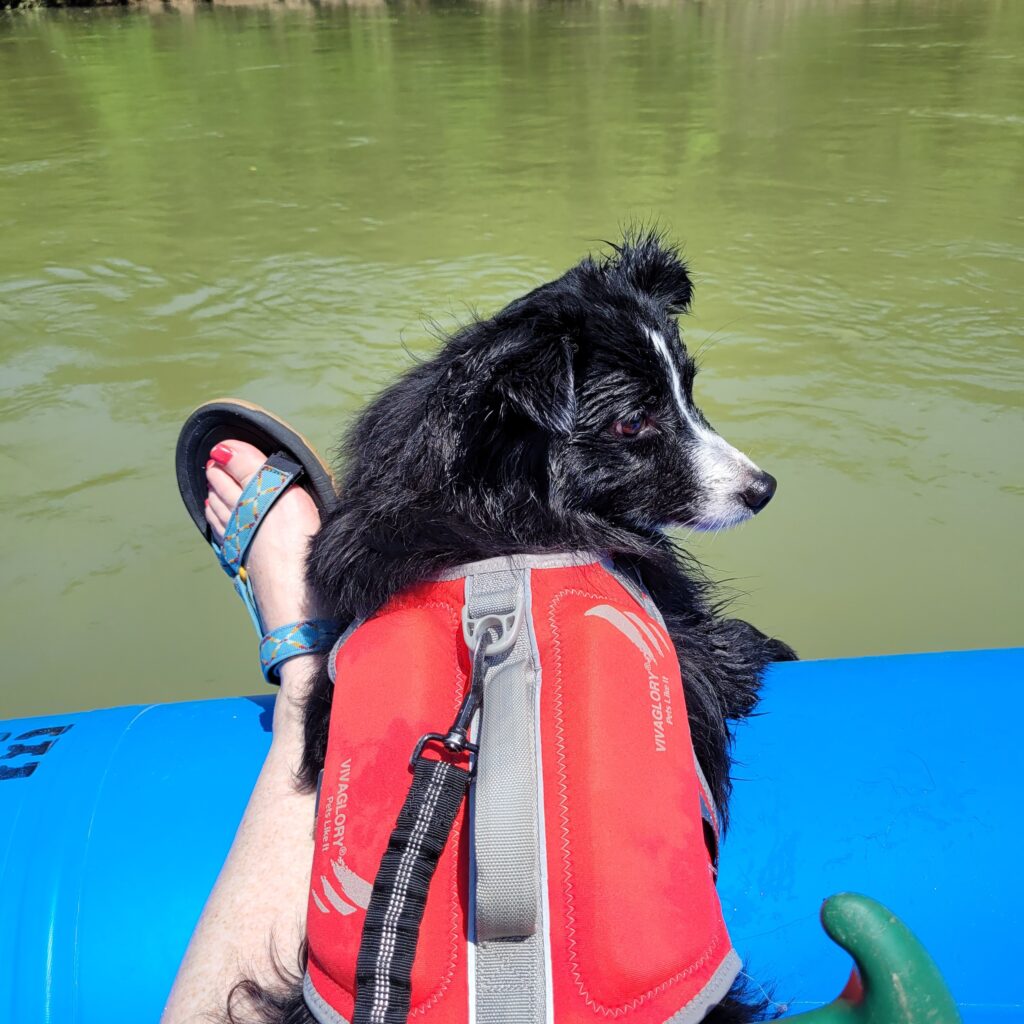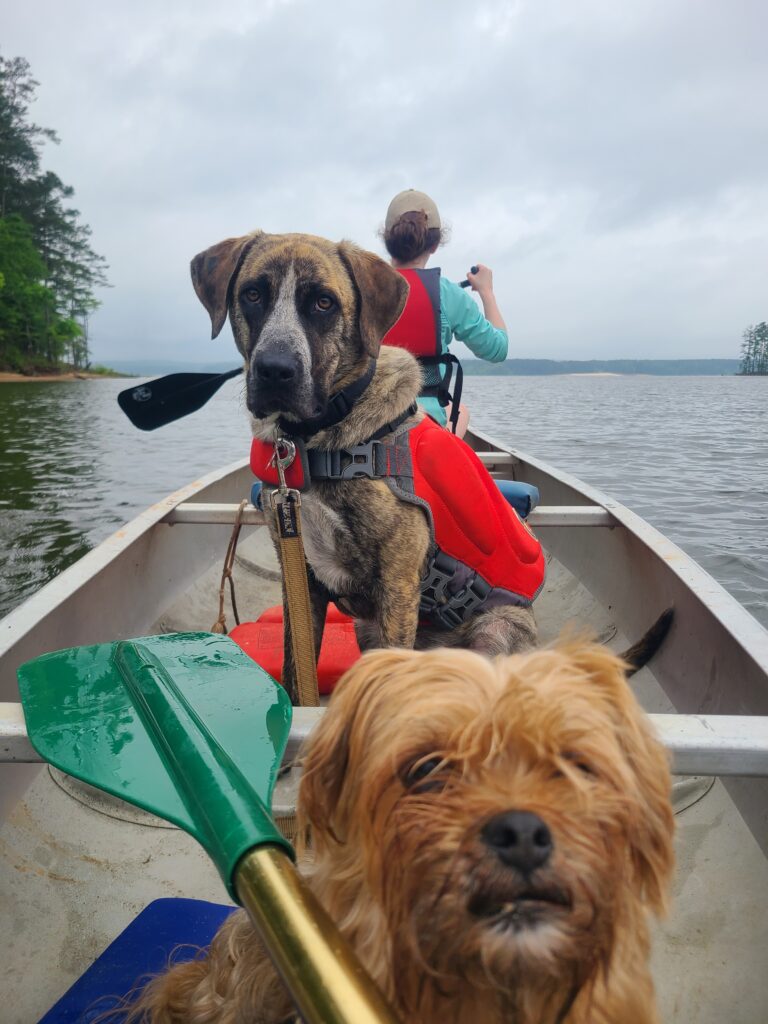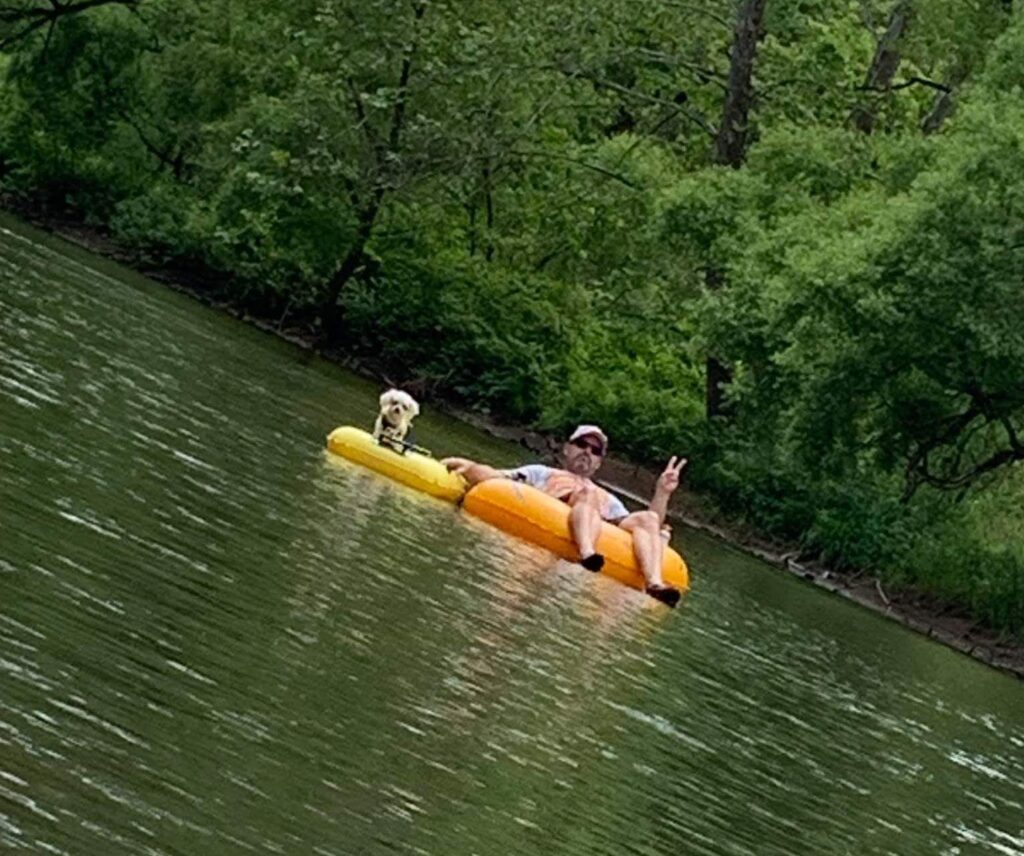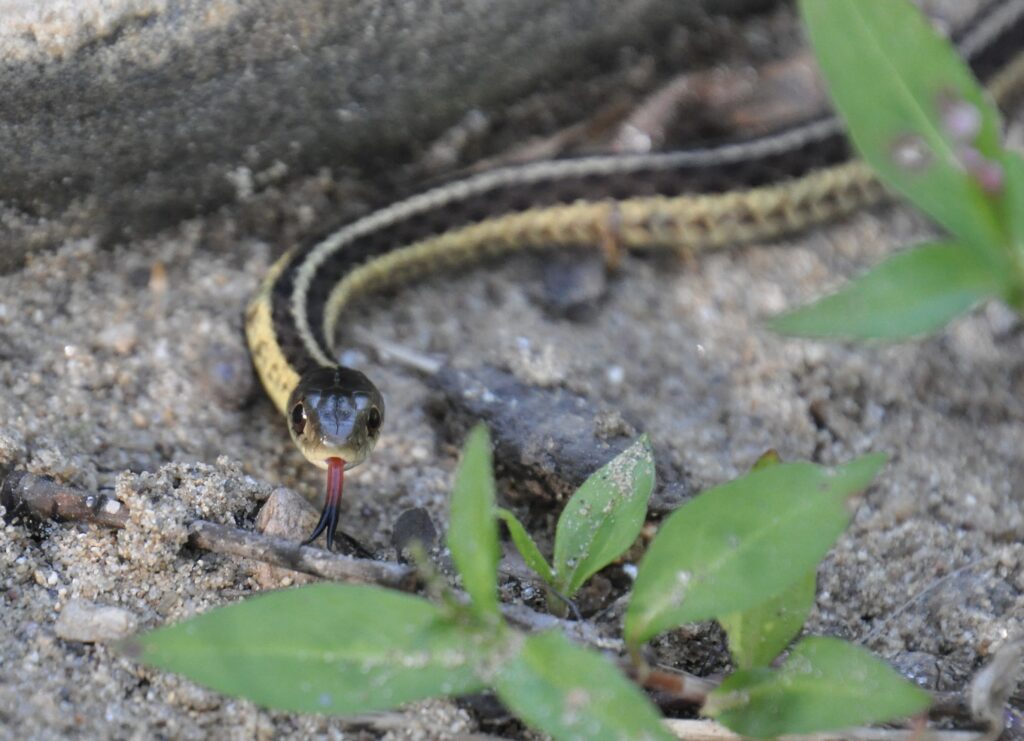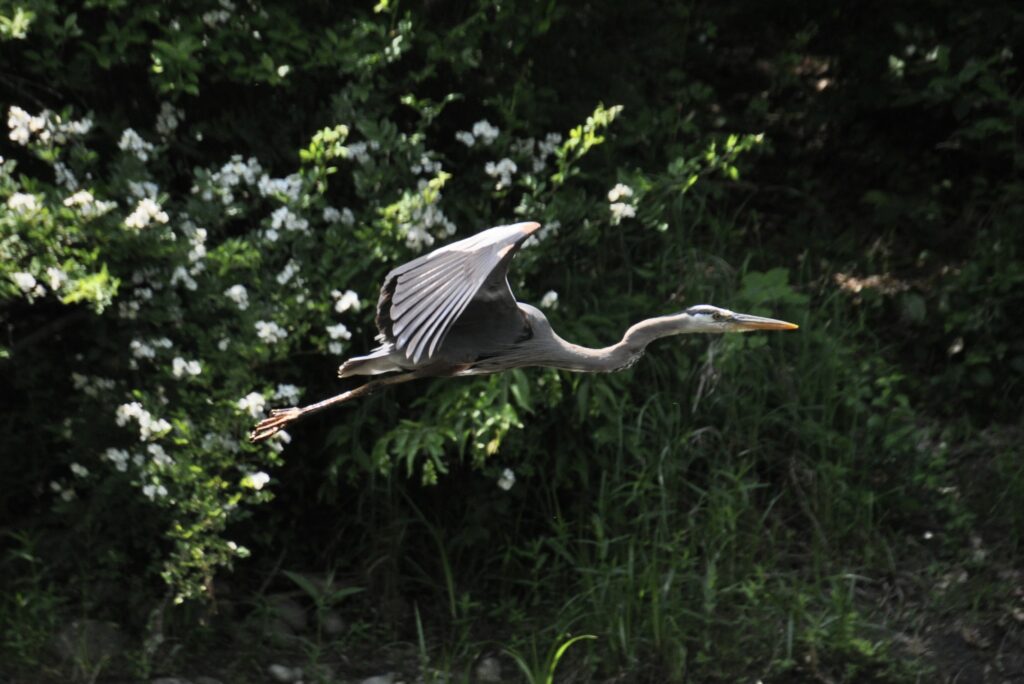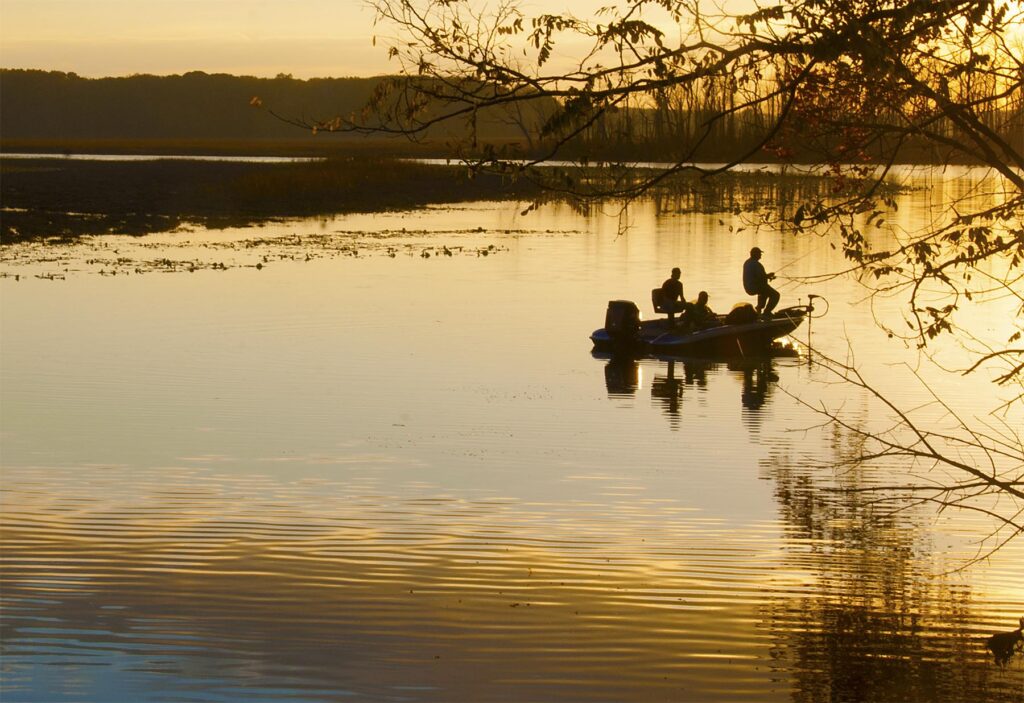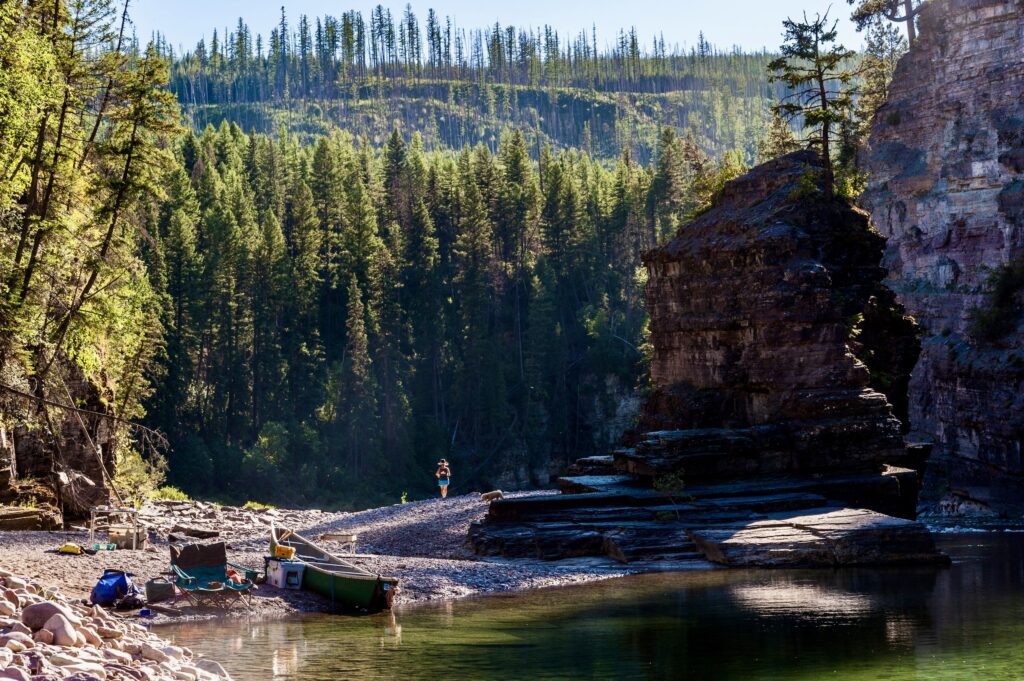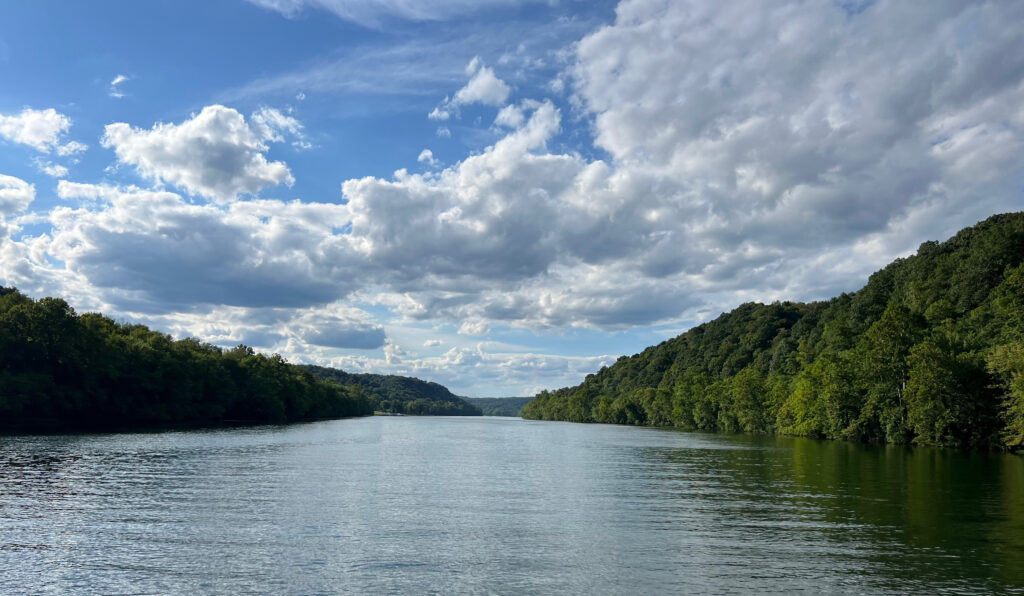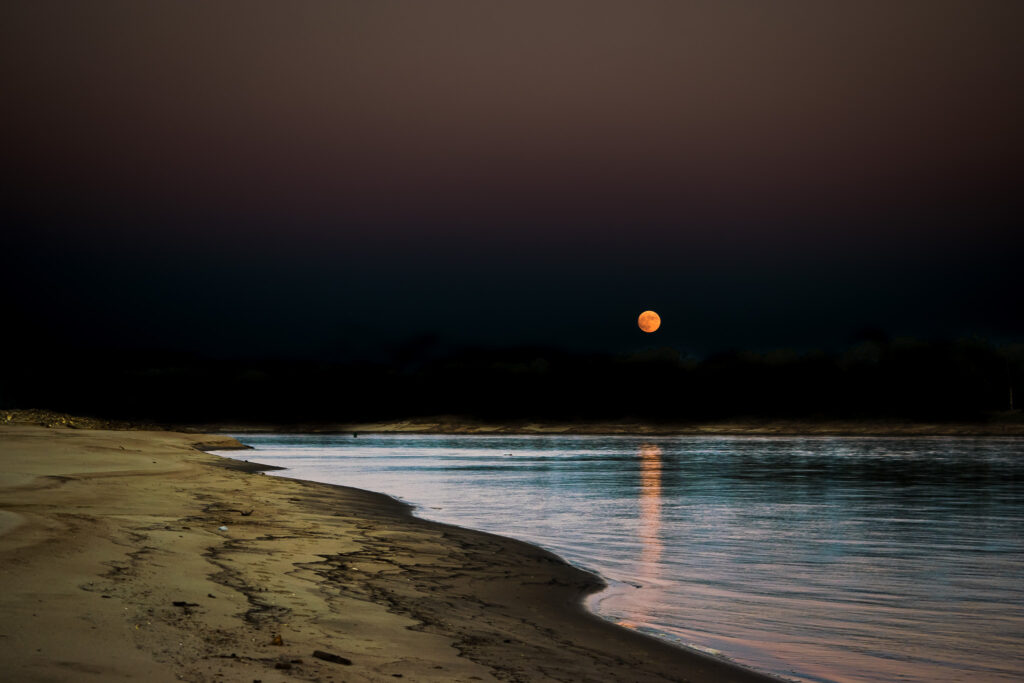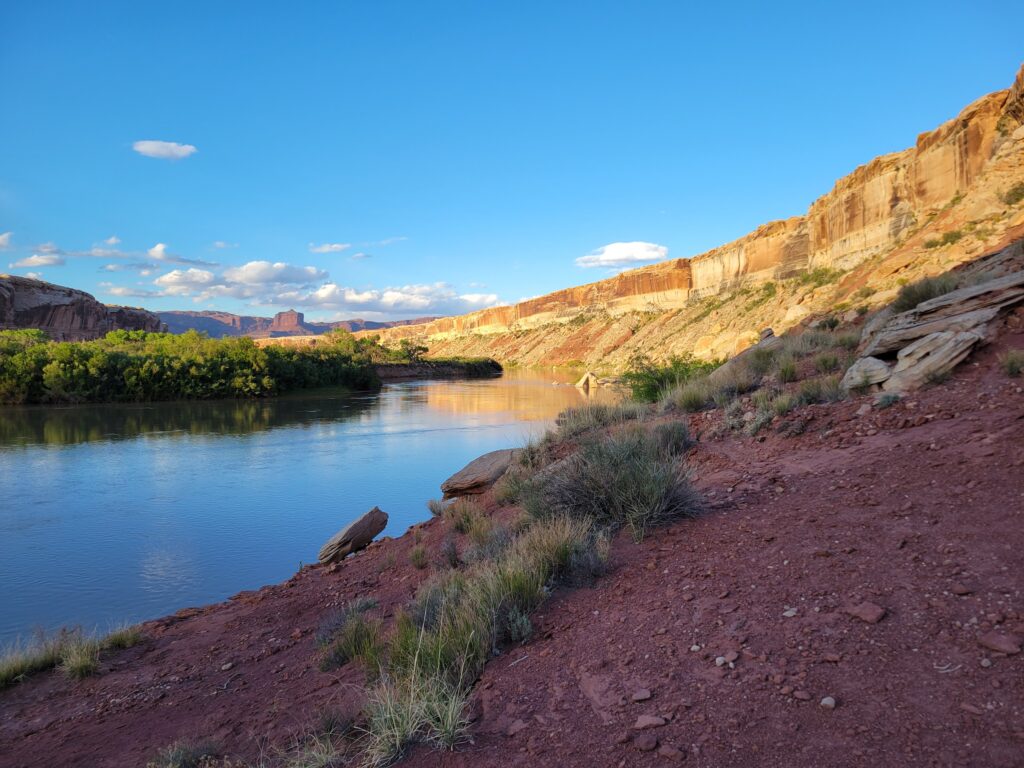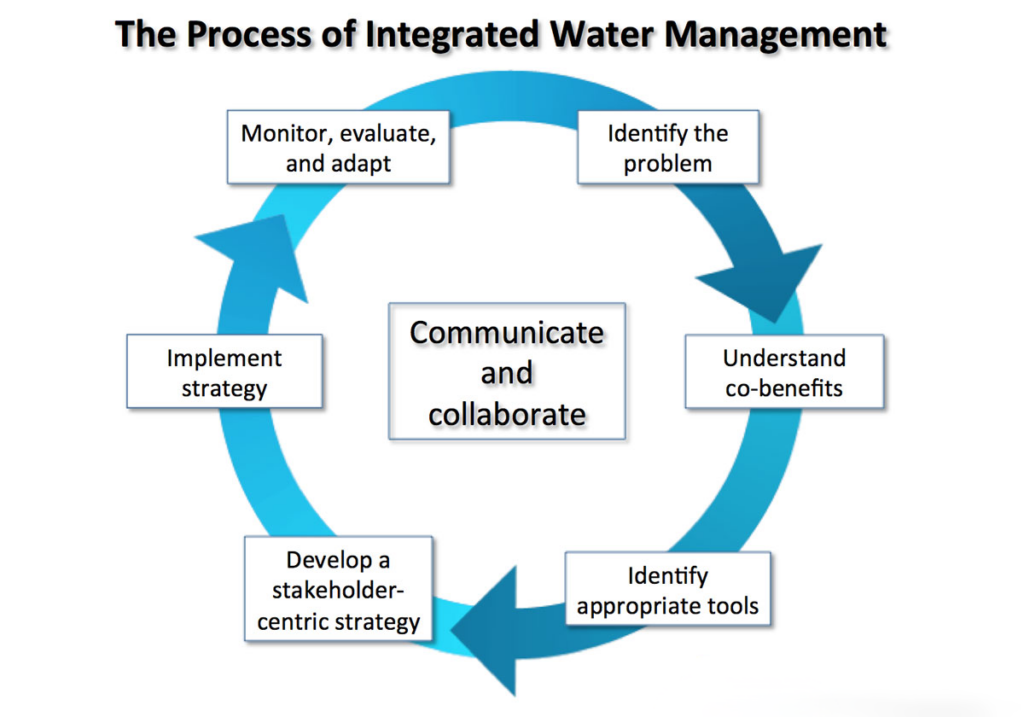The temperatures have made it quite obvious, but just in case you did not know, summer has officially begun! To get you all just as excited as we are here at American Rivers for those long summer river days, we asked you to share your river photos with us, and let me say, you all did not disappoint.
From cute pets to epic whitewater shots to serene sunsets, we’ve got it all. Below you can see just some of the pictures we received. It was so hard to pick which ones to feature, so if you don’t see your picture, don’t fret! Keep following American Rivers across our platforms to see if your picture is featured.
Now, enough of the chitchat. Let’s showcase some photos!
Whitewater
If you have been in whitewater, you know just how unpredictable it can be. With crossing currents, strong eddy lines, rock gardens, and more, you never paddle the same river twice. Just ask Bekah Grim:
“I got up close and personal with Pinnacle Rock at 2,800 CFS, a prime level just before this hit is washed out. This is in Brown’s Canyon on the Arkansas River in Colorado. I somehow landed in the raft and resumed guiding.”
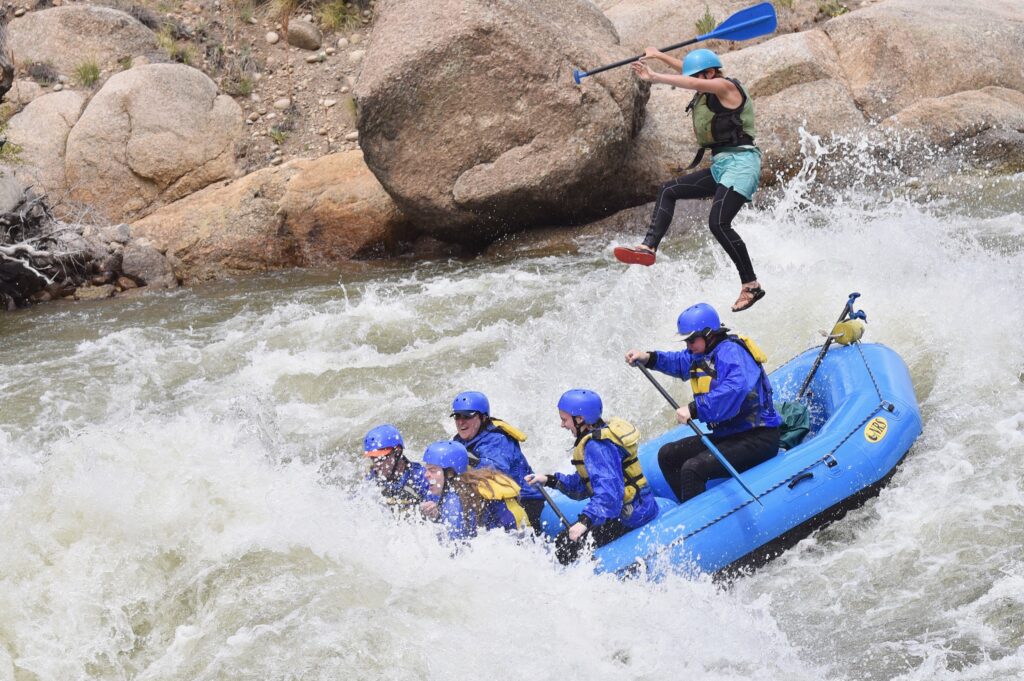
Sometimes you intentionally style yourself down some falls, which by the way, do not do without proper equipment, safety boaters around you, and knowledge of the river. Thankfully, Addison had all of those things when he decided to send Kanawha Falls on the Kanawha River in West Virginia on his paddleboard. Skill, precision, guts.
Paddling rivers and moving through whitewater also brings a sense of being part of something bigger. Mandela van Eeden shares what guiding on the Alsek River in Alaska means to her:
“I’ve guided rivers around the world for 20 years, but the Alsek remains one of the most powerful. From rowing across iceberg-studded Alsek Lake to preparing for the Turnback Canyon portage, every moment here reminds me: running rivers is a privilege, and with privilege comes responsibility. Wild places like this inspire awe, but more importantly, action. I guide to help protect them—because people fight for what they’ve experienced.” – Mandela van Eeden
Photos from left to right: Oceana Falls, Tallullah Gorge State Park | Robyn F. Baker, Wolf Creek Rapid on the Selway River, Idaho | Jake Blotter, Rackette River, paddling towards Long Lake in the Adirondacks of Upstate New York | Sarah Campbell
Pets and Wildlife
Who doesn’t enjoy a walk or paddle with their best furry friend? I mean come on…that smile says it all.
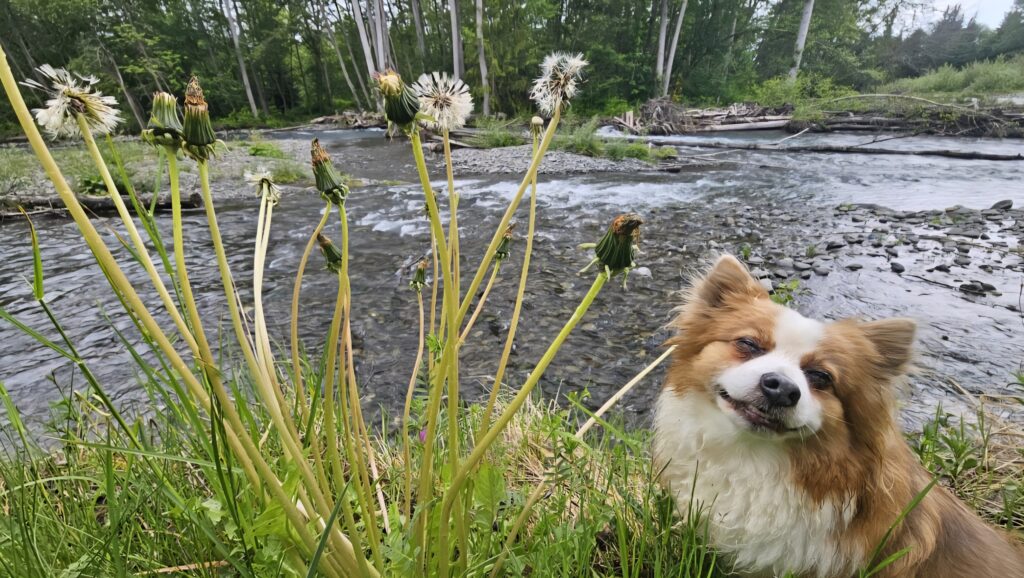
“Majestic protector” is what I would use to describe this pupper.
“Deerfield River near Charlemont, MA. Chili, our little rescue, loves paddling the lower section below the Gap in our inflatable. She watches over all members of our group when we go.” – Deborah Spadaro
Even if they might not be sure of it at first, floating with your furry friend is always a special time!
Photos from left to right: “We float the beautiful Buffalo National River every weekend in the spring/summer! Located in Arkansas & it is the 1st National River. 10/10 ❤️” Geneva Stafford | “Eddy, our 2 year-old rescue, wasn’t sure about his first paddling trip on the Haw River near Cary, NC. Lucky for him, little sister Rosie was happy to show him the ropes.” Kerri Hable | Tubing on the Pine Creek in Pennsylvania | Joseph Womer
Bonus: Check out some pro tips to keep you and your dog safe on the river all summer long! Make sure to be aware of your surroundings, you never know who is slithering by…or flying by!
Fishing
Fishing…one of the greatest pastimes. Whether you’re spending time with friends and family or going solo to be one with the river, fishing is an experience that truly can be described as “ya never know what you’re gonna get.” It can take you to some scenic areas where you get some pretty sick drone shots:
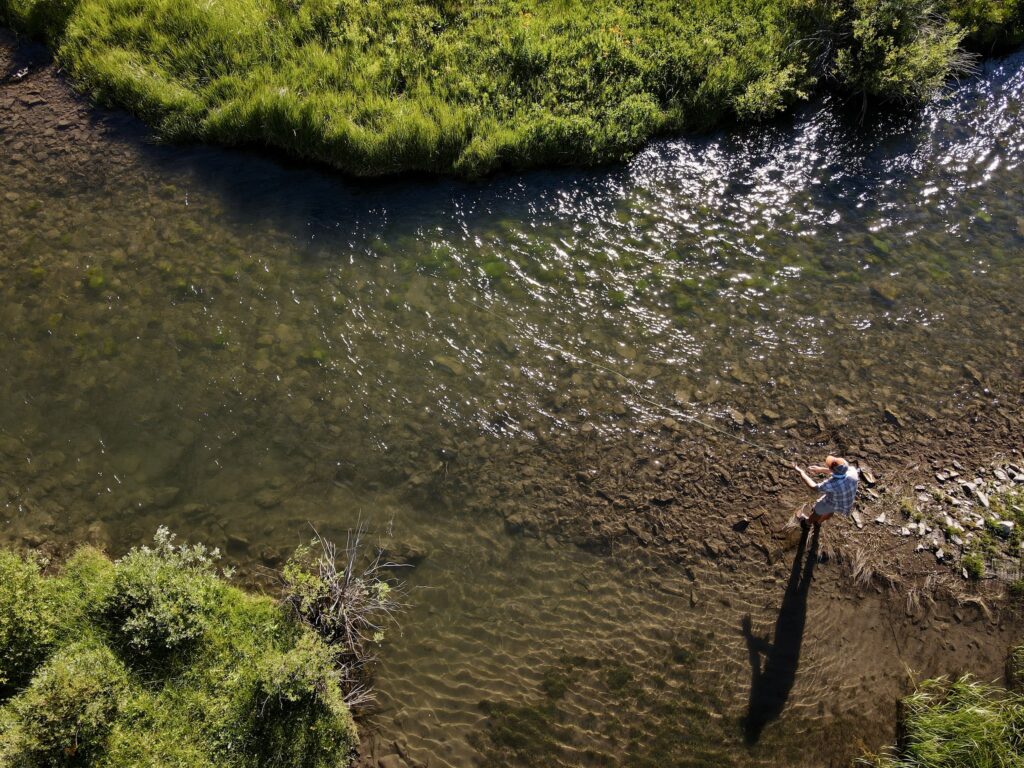
You’ll also find yourself in places where you are lucky enough to witness the most stunning sunsets.
“Last casts on Mattawoman Creek in Maryland. The freshwater tidal portion of this coastal plain river is a favorite of largemouth bass anglers who can be reluctant to call it a day.” – Jim Long
Captivating Beauty
Honestly, rivers are just freaking beautiful.
The story of just how important rivers are to us across the country is clear — we depend on rivers, and rivers depend on us. Rivers flow through our communities, they flow through our lives, and they flow through our taps, providing most of our nation’s drinking water. So, while you’re out on rivers this summer, take some time to learn more about them, take care of them, and have fun! And remember: Life Depends on Rivers™.
I always appreciate a trip out to Maryland’s Eastern Shore. There’s so much space. Deep breaths. Cruise control.
I’m driving from Northern Virginia. No space. Brake lights. Honk honk.
This winter I got to drive out to the Eastern Shore many times to track the evolution of a river coming back to life. Water flowing. Sun shining. Freedom. YES.
Most days I sit at my desk. My dog asks what we’re working on today. I tell him we’re saving rivers. Making people safer. Making communities more resilient. He says that looks like a lot of documents and Brady Bunch (he’s old school). He’s right.

But this winter, oh boy! Out to the mythical “field”! This is what we’re working for. Transformation. Rejuvenation. Living. Breathing.
The day I went out after the river was finally reconnected, I felt like an idiot walking by myself with a big stupid grin, bopping along with my muddy, happy feet. We did it! Years of work lead up to this moment. This future.
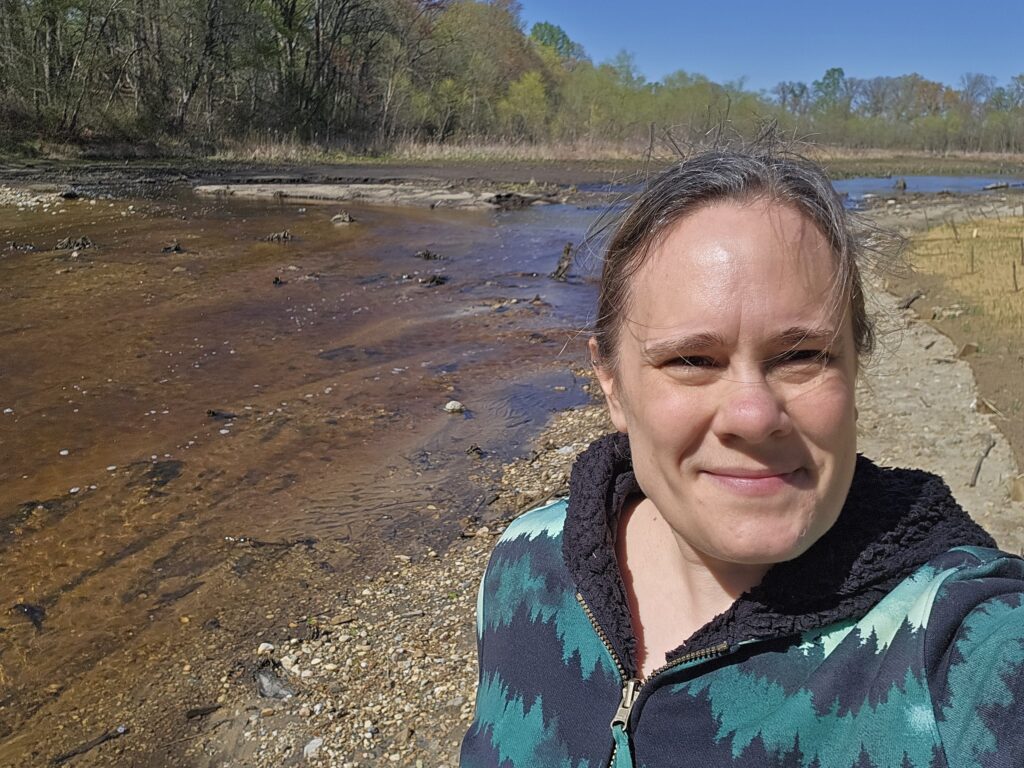
I couldn’t help but think back through the hurdles to get to this moment.
This project didn’t start with me; it started with Serena McClain, who is now the leader of our National Dam Removal Program, but who at that time was in the trenches. We were working on wrapping up the Bloede Dam removal project, and the Maryland Department of Natural Resources had another dam in another state park that they were thinking about removing— Cypress Branch Dam in Cypress Branch State Park in Millington.
While this is a newer state park, the dam was old and busted. You had to wander around in the woods to find it. It was a relic in the milling history of the Eastern Shore. No one really knows who built it and when. More recently, it had become breached, but was still keeping fish from migrating upstream to spawn and disrupting normal river functions. Hence, the motivation to look into removing it. It checked all the boxes:
- Not serving a useful purpose ✅
- Public safety hazard ✅
- Impacting fish passage and river function ✅
- Falling apart ✅
Serena got things started in 2019 with the Maryland Geological Survey who did some investigations on sediment. If you follow rivers in the Chesapeake region at all, you KNOW sediment is a big topic of conversation. Where’s the sediment coming from? Where is it going? What do we do about it? And on and on until I’m buried six feet under.
I digress. Fortunately, the sediment experts determined that there was no contaminated sediment at this site, and the volumes were fairly low because the dam had been breached for some time already. So, not a big concern, which was great.
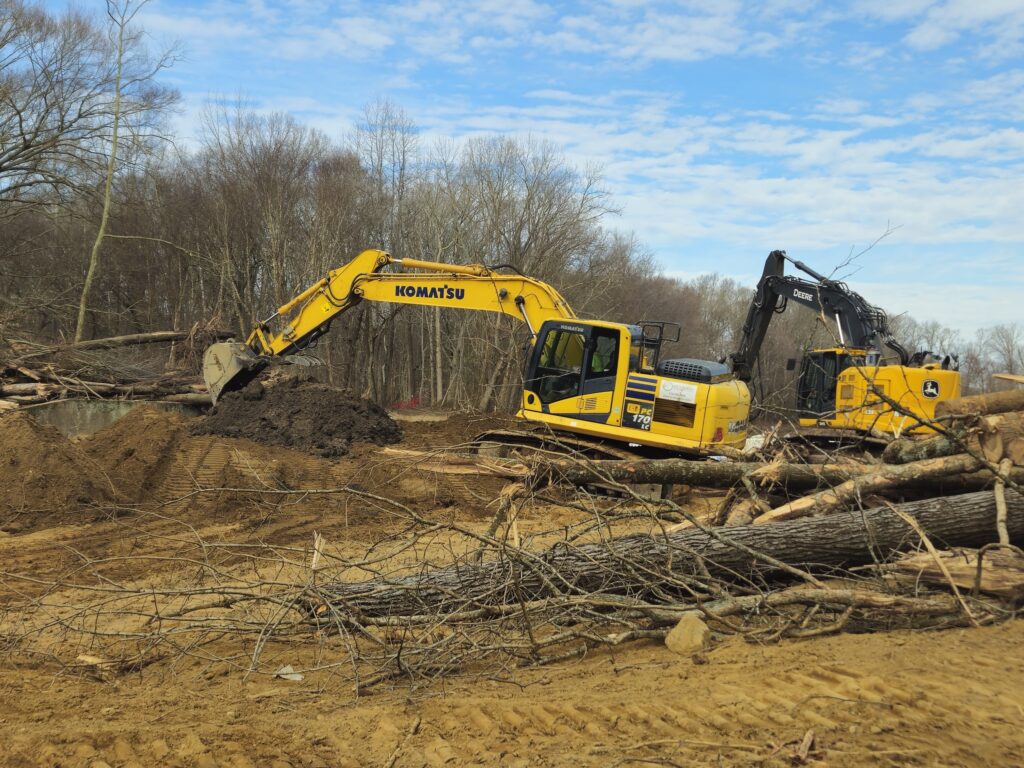
Fortunately, the U.S. Fish and Wildlife Service was an early supporter and funder of the project. They saw the potential to reconnect more than 35 miles of habitat for herring, hickory shad, and other species, and they dove right in with us.
Next, an engineering firm, Princeton Hydro, was hired to pull together design drawings. They got rolling along… and then the pandemic hit. What day is it again? Ugh.
Things start to move again… then we had some design disagreements. I love having good partners and working with good contractors. Everyone is invested in making the project the best it can be, with the most positive impact for the system. However, that doesn’t necessarily mean that everyone always agrees on the path to get there. So sometimes we have to wade through the process, compromise, and eventually find the path forward.
I stepped in as Project Manager in the middle of this wallowing period. Determined to shake this thing loose and get to the finish line. We move a step forward.
Now, I’ve talked about this in the past— one problem with projects that float around for a while is that other problems can arise as time goes on. In this case, the cost of construction work popped right up after the pandemic. I realized that we were not going to have enough funding to make it through construction. We needed some more dough.
Fortunately, the Environmental Protection Agency, by way of the National Fish and Wildlife Foundation, agreed to help us out with a generous grant. Awesome! Back on track.
Just need the final permits. Negotiating. Still waiting. Need to figure out historical mitigation. More negotiating. More waiting. Need an adaptive management plan. What’s that? An adaptive management plan is more or less a plan for if things do not go as expected. Who makes decisions? What triggers actions? We figured these things out. We worked with our partners and regulators to decide on a plan for follow-up post-project. We received our permits. Whew.
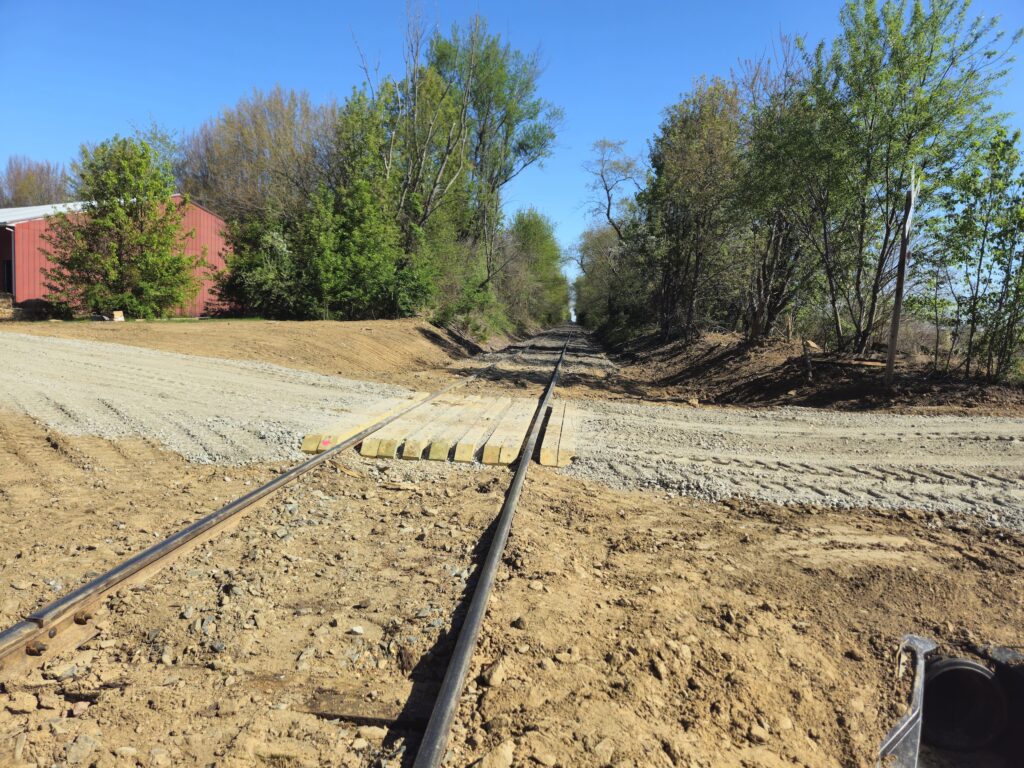
In the midst of these permit negotiations, there are rumblings about a problematic railroad crossing that bypasses the park and incidentally our construction access road. Do I know anything about railroads? Really not much more than I’ve learned from Thomas the Tank Engine. So, we go back and forth about what to do with this crossing. We don’t want to damage things with our heavy equipment. Eventually, we decide that we can use mats to cross it and then work towards a plan to rehabilitate it while construction is ongoing.
In Fall 2024, we hired an environmental construction company, Ecotone, to do the work on the ground. We hope to go to construction in December. We need to get some shop drawings (i.e., detailed plans for a specific element of the design) approved before we can do that. It is right in the middle of the holidays. Deck the halls and all that. More waiting.
Finally, we are able to break ground in mid-January! And there was much rejoicing… until… we have a new federal administration. And federal grants are being paused. And my anxiety shoots through the roof. Will today be the day we lose our funding? Tomorrow? Court cases. Temporary reprieves. Will we make it?
The thing about these projects is that they are akin to a massive surgery. You get to a certain point where the guts are all out, and you just can’t go back. The only way is to keep moving forward.
Fortunately, our grants did not get paused. And we got the guts all put back, this time in the right places without a clogged artery.
And it is beautiful. And cool!
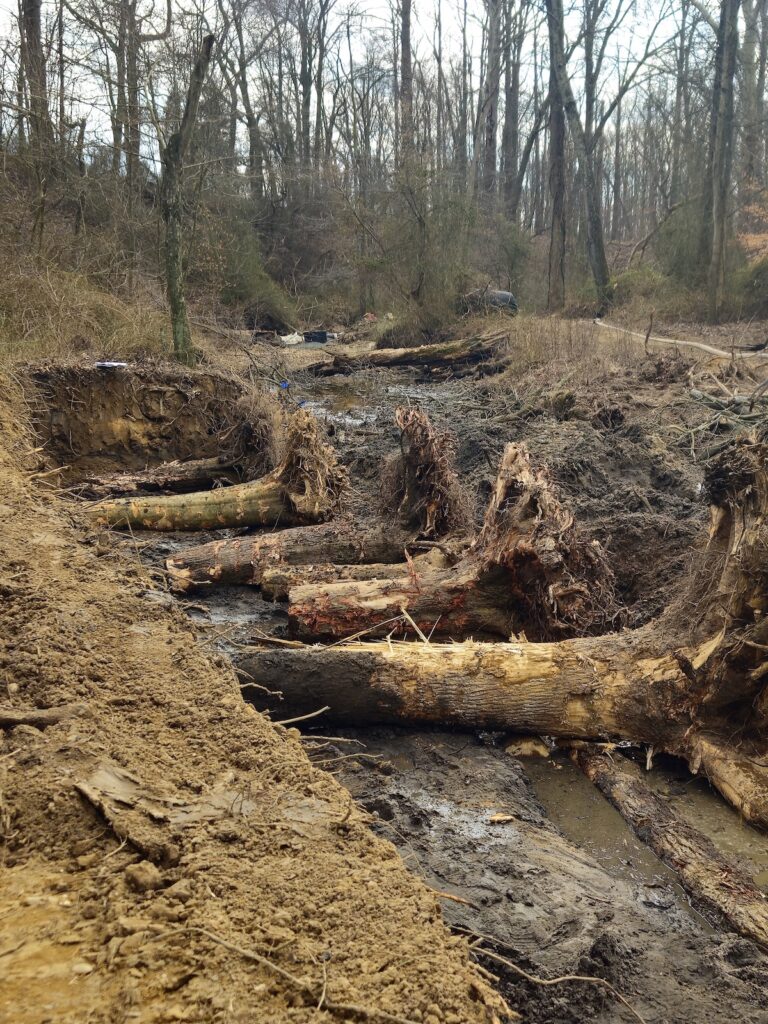
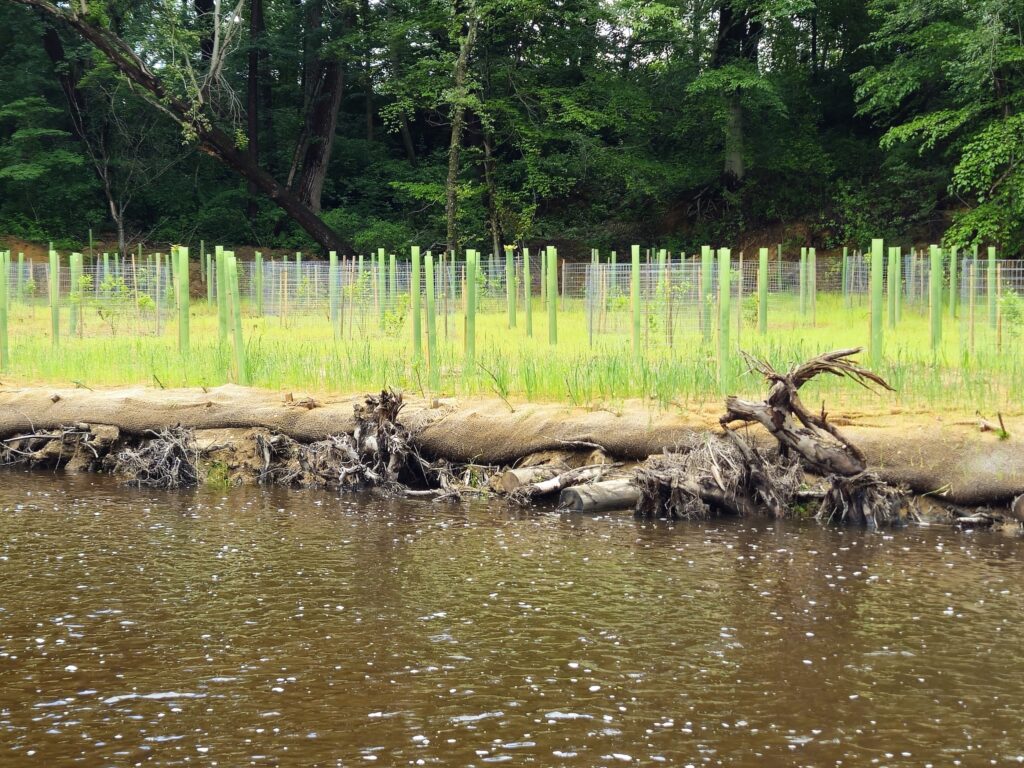
We installed some very neat root wad structures to stabilize the river banks. It’s like nature reaching out with its creepy fingers. We removed all the concrete from the former spillway and moved around parts of the earthen portion of the dam. We also realigned the channel which had been breaking off into different sections to make its way around the spillway. It was an odd site to photograph from the ground before the removal, so I am sharing some aerial images to help give a sense of the restoration effort.
Did we ever figure out what to do with the railroad crossing? Oh yes, indeed. We came to an agreement right near the end of construction. Thanks to a funding supplement from Maryland Department of Natural Resources, we were able to fix that crossing right up while on our way out of the site.
We also received a bit more funding support from RJN Foundation to round things out at the end. I am so grateful to all of our funders for their support.
Shortly after the final plantings were completed, I revisited the site to see how things were adjusting. This osprey seemed to be enjoying itself quite thoroughly in the former impoundment! What a lunch!
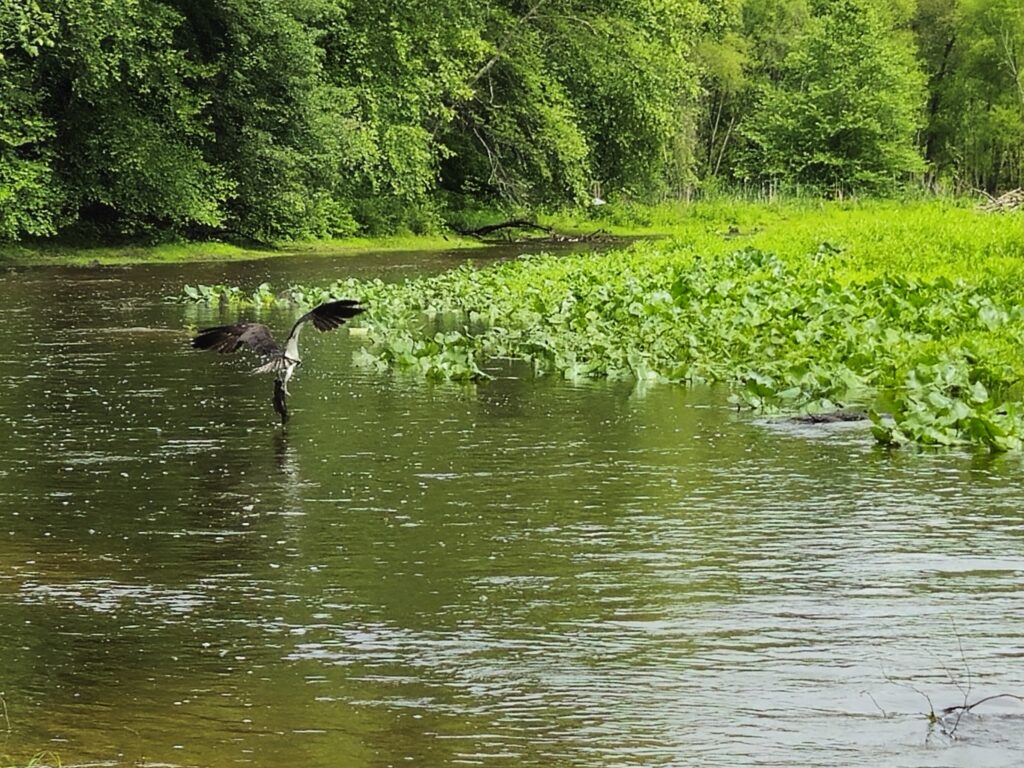
And there you have it. Another one bites the dust. Huzzah!
As we observe National Dam Safety Awareness Day and reflect on the anniversary of the Johnstown, Pennsylvania dam failure in 1889 that took the lives of 2,200 people, I am heartened to know that this is a problem we can solve.
There are more than 500,000 dams scattered across our rivers and streams, many of which are in a state of advanced disrepair. The good news? These tragedies can be avoided with proper funding for repair and maintenance. To make that happen, we must prioritize restoring funding to FEMA’s National Dam Safety Program and to state dam safety offices.
In many cases, the most cost-effective way to ensure public safety is to remove dams, many of which no longer serve their intended purpose anyway. Removing outdated, hazardous dams protects our communities from preventable disasters. The good news is that communities across the country are doing just that! To show the positive progress being made across the country, we have curated a list of upcoming dam removal projects to show how these removals are possible in communities across the country.
1. Lockville Dam | Deep Creek, North Carolina
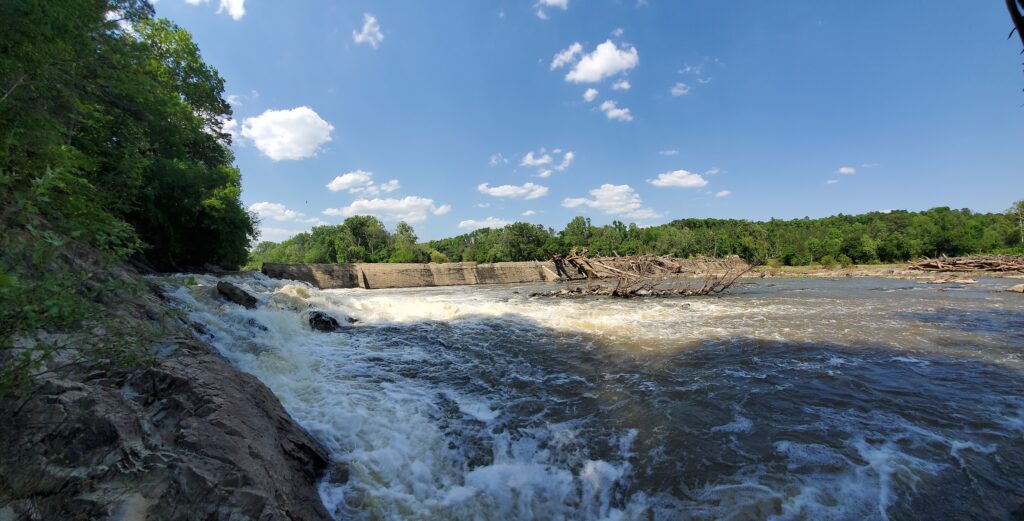
Why you should care: The Lockville Dam removal project has been designed to improve public safety and long-term sustainability for the surrounding community. The dam is in poor condition, and a backup of fallen logs and debris has accumulated behind the dam. American Rivers aims to reconnect 56.5 miles of the Deep River and its tributaries through the removal of the dam. The project is a restoration priority for the endemic and federally endangered Cape Fear Shiner. Several freshwater mussel species, including the Federally threatened Atlantic pigtoe, are known to be in the Deep River. The removal of Lockville dam, which was originally damaged during Hurricane Florence in 2018, is a critical step in a wider transformational watershed restoration project which is aimed at restoring fish passage for migratory fish species.
2. Bridge and East Elm Street Dams | Royal River, Maine
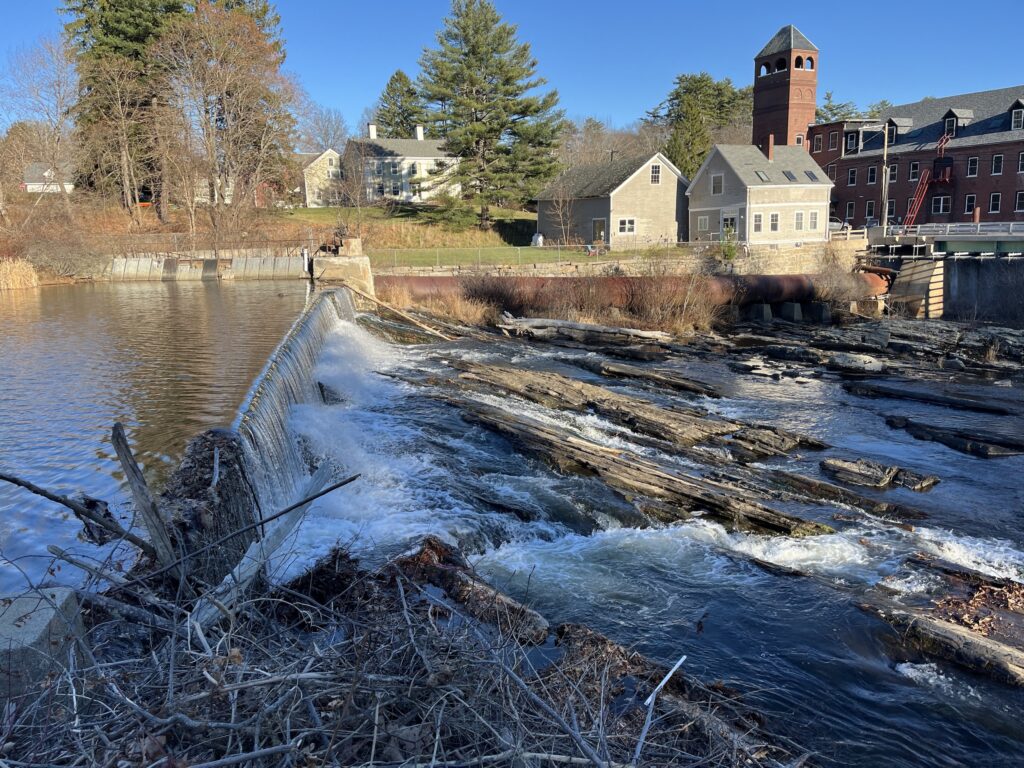

Why you should care: American Rivers is working in partnership with state, municipal, and local conservation organizations to restore migratory fish runs in the Royal River watershed. The Royal River is a 140-square-mile watershed that drains directly to the Gulf of Maine. These two mainstem dams, which are the first barriers on the Royal River, have been blocking fish passage since their construction in the 19th century and together block access to over 100 miles of mainstem and tributary habitat for river herring and other fish species. Both dams are small, coming in at 10’ and 12’ in height, respectively, and are in poor condition.
3. Allegheny Side Channel Dam | Allegheny River, Pennsylvania
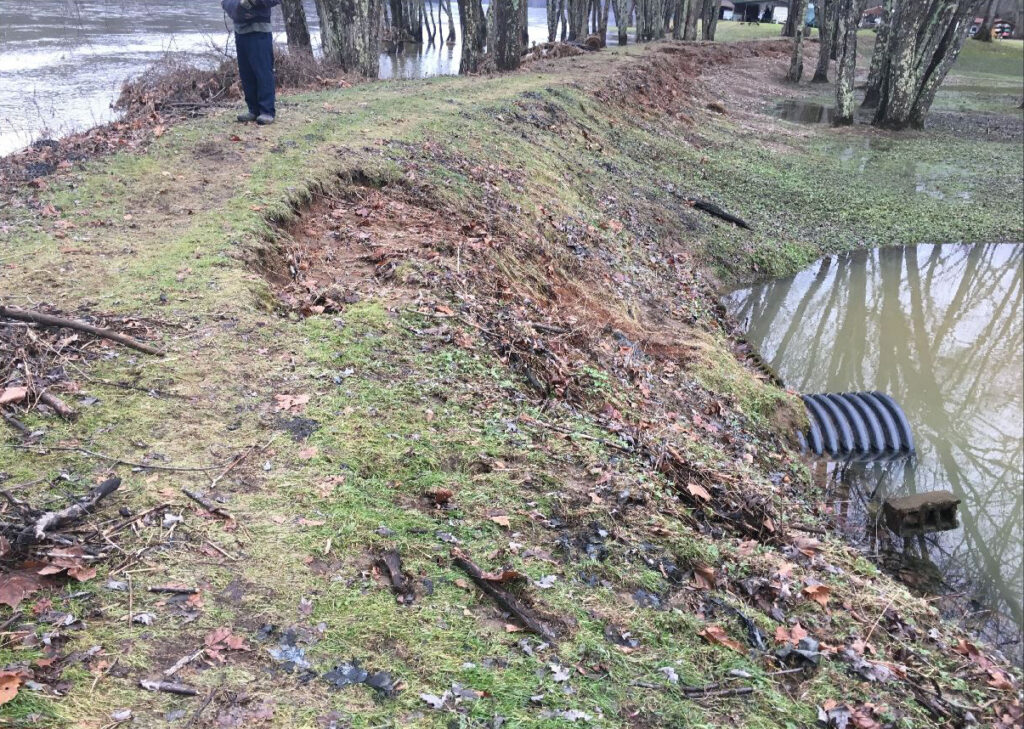
Why you should care: Removal of the Allegheny Side Channel Dam is part of a broader project that includes the removal of 10 dams throughout the Ohio and Susquehanna River watersheds, resulting in reconnecting 285 river miles and roughly 28 acres of wetlands and floodplain habitat. As its name indicates, the Alleghany Side Channel Dam blocks a side channel of the Allegheny River near the Allegheny National Forest, which provides important nursery habitat for small darters and shiners, as well as habitat favored by endangered freshwater mussels.
Approximately a quarter of the world’s freshwater organisms are at risk of extinction, and the world is losing freshwater species faster than land or ocean species. From the Colorado River, where the pikeminnow lives, to the North Fork of California’s Feather River, where the foothill yellow-legged frog calls home, rivers provide critical habitat for endangered fish, amphibians, insects, and birds that rely on them. Endangered freshwater species include unique freshwater mussels in the Southeast and culturally significant salmon in the Pacific Northwest, which in turn supports the Southern Resident Orcas in Puget Sound. In many places, endangered freshwater species are a keystone — supporting entire webs of life and bolstering the healthy rivers and creeks that we all know and love.
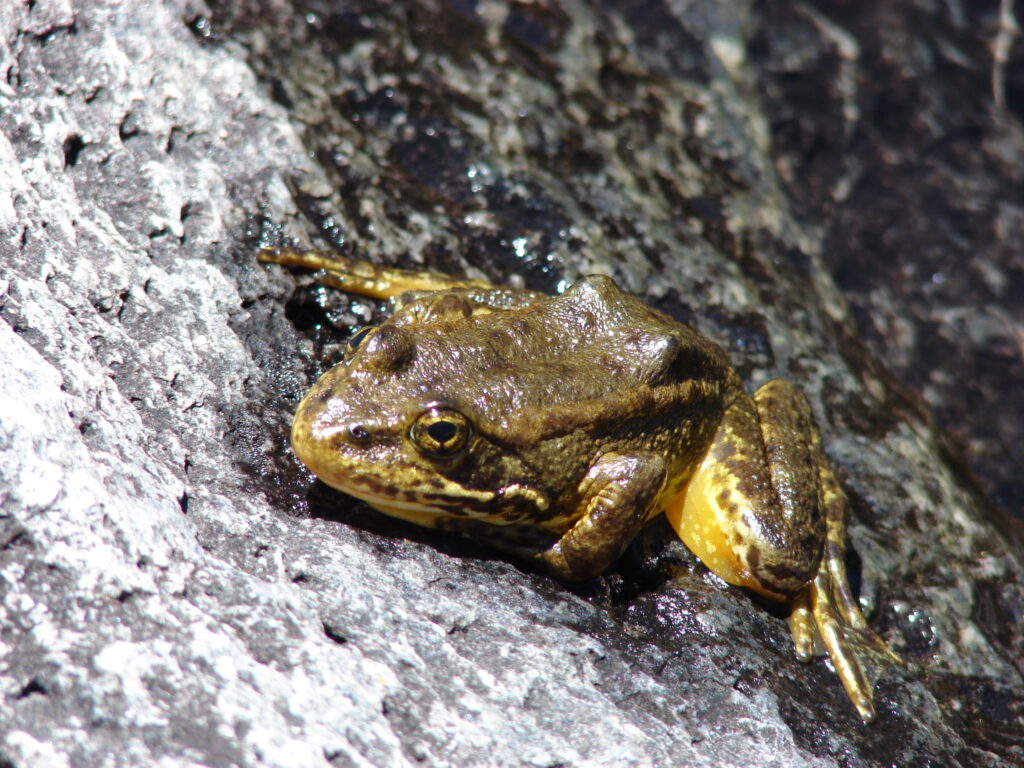
One of our nation’s landmark environmental laws that holds this delicate balance of nature together, the Endangered Species Act, is currently facing a new threat. A new rule from the U.S. Fish and Wildlife Service and the National Oceanic and Atmospheric Administration would redefine what harming a species means under the Endangered Species Act by eliminating the protection against habitat destruction. This has been a longstanding protection that directly protects against one of the leading drivers of species extinction — habitat loss.
If this rule moves forward, the essential places that numerous endangered species use for feeding, breeding, sheltering, and surviving will be at risk. The ecosystems upstream and downstream that those species support will also be at risk, as well as areas that we humans depend on for clean drinking water and many other benefits.
Examples of rivers with endangered wildlife include:
- The Lower Missouri is home to piping plover, interior least tern, and pallid sturgeon
- The Puyallup River and South Fork of the Salmon River house Chinook salmon, steelhead, and bull trout
- The Columbia and Snake Rivers are home to thirteen salmon and steelhead runs that are listed as endangered
Without the protection afforded by the Endangered Species Act, these rivers as crucial habitat may be at increased risk of unfettered and unmitigated development, improper water allocation, and other inappropriate and environmentally unsound uses.
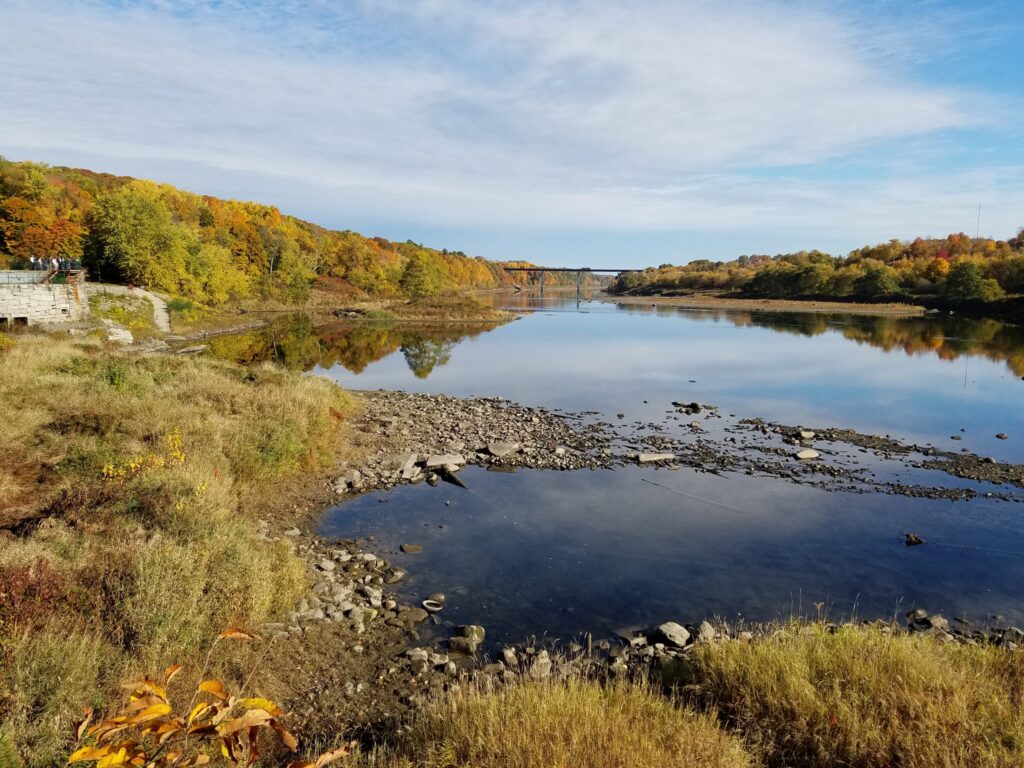
The current inclusion of what “harm” means in the Endangered Species Act has historically enabled dam removals that lead to restored habitat. The removal of the 160-year-old Edwards Dam on the Kennebec River in Maine was driven by the need to protect threatened and endangered species, including the shortnose sturgeon and Atlantic salmon. Since that river restoration project was completed in 1999, more than 2,000 other dams have been removed across the country for the benefit of wildlife and communities alike.
Attacks on habitat and wildlife protections are harmful, short-sighted, and out of step with what the American public wants. Abundant nature and wildlife are values that we all share and enjoy, no matter who we are or where we come from. Hunting and fishing are treasured traditions – not to mention a multi-million dollar industry – and depend on healthy rivers and ecosystems. The health and strength of our communities are directly related to the health of our rivers and waters. We must do more, not less, as a nation to protect our water wealth.
Clean water is a fundamental need, and rivers touch every aspect of our lives. Telling positive stories about rivers is important to ensure every river is clean and healthy for people and wildlife. So it was a pleasure to team up with CBS News on a significant package of stories for Earth Month.
Together, these stories provide an excellent overview of the challenges and opportunities facing our nation’s rivers. They remind viewers about the vital role rivers play in providing our drinking water, supporting fish and wildlife, powering our economy, ensuring healthy communities, and creating endless opportunities for beauty, connection, and joy.
“An American River” – a documentary about the Delaware River
The CBS News crew traveled from source to mouth down the Delaware, meeting people along the way who work on, and speak up for, the river. The documentary is a heartfelt and hopeful look at the vital work underway to protect the river and all the life it supports.
Paddling his canoe, Adam Schellhammer, Mid-Atlantic Director for American Rivers reflects, “It’s not just about fun… from a very basic survival need, we need to protect our waterways.”
America’s Most Endangered Rivers® of 2025
This year’s list of America’s Most Endangered Rivers® is a call to action for clean water and public safety. CBS showcased the campaign with thoughtful news coverage, interviews with American Rivers leaders, and a spotlight on New Jersey’s Passaic River.
Local reports highlighting river threats and solutions
All 14 CBS-owned stations produced local reports highlighting regional rivers’ threats, and had great examples of river restoration. From Maryland to Texas to California, here are some inspiring stories:
Take action and support your river
If you feel inspired after watching these videos, there are great ways to help:
- Take action for America’s Most Endangered Rivers of 2025
- Donate to American Rivers to support our river protection efforts nationwide
- Speak up for your own river: contact your local decision makers and encourage them to be river champions. Find your local river group and support their important work.
Flooding earlier this month claimed lives and destroyed homes and businesses across the South and Midwest. It is the most recent example of how extreme weather is devastating communities and putting our rivers and clean water at risk.
It’s against this backdrop that American Rivers is announcing America’s Most Endangered Rivers® of 2025. Our message is simple, and we have a plan: To stop the cycle of destruction, we must invest in solutions that protect river health and our nation’s clean water security.
Topping the 2025 list is “America’s River”, the Mississippi. As I write this, portions of the river are at flood stage, or approaching flood stage, as a result of recent heavy rain and snowmelt, according to the National Weather Service.
But high water isn’t the only threat. Layoffs at the Federal Emergency Management Agency (FEMA) and calls to abolish both the agency itself and the National Flood Insurance Program put river health and human safety at risk, and could compound longstanding threats to river health.
Spotlighting what matters most
Whether your community is more vulnerable to floods, droughts, or wildfires, we all want to keep our families safe from extreme weather. And no matter where you live, it’s the communities with healthy rivers that are stronger, better equipped, and more resilient in the face of these threats.
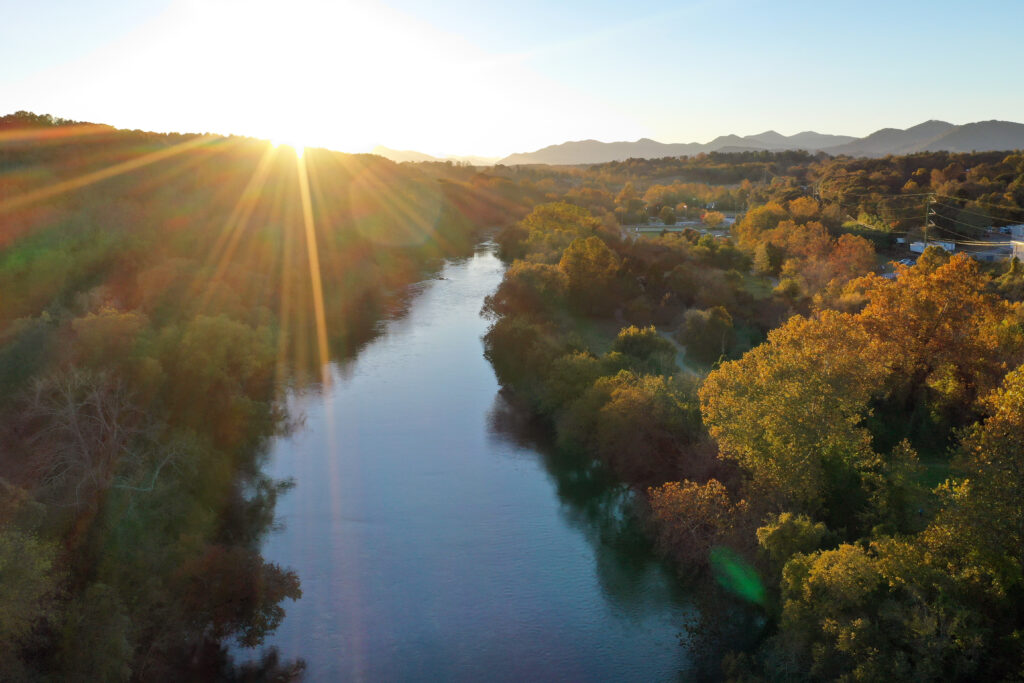
In addition to safety, another need we all have in common is clean, safe, reliable drinking water. Most of our drinking water comes from rivers – but half of the rivers in the United States contain unsafe levels of pollution.
Public safety and clean water aren’t red or blue state issues. They are shared values that connect us all. “Our water wealth is one of our greatest assets as a nation,” says American Rivers president and CEO Tom Kiernan.
Protecting these shared values and our nation’s water wealth is the motivation behind America’s Most Endangered Rivers ®. Every year, working with local partners, we sound the alarm and deliver an urgent and timely call to action for the rivers we all depend on. As we celebrate the 40th anniversary of this campaign, protecting clean water and healthy rivers has never been more important.
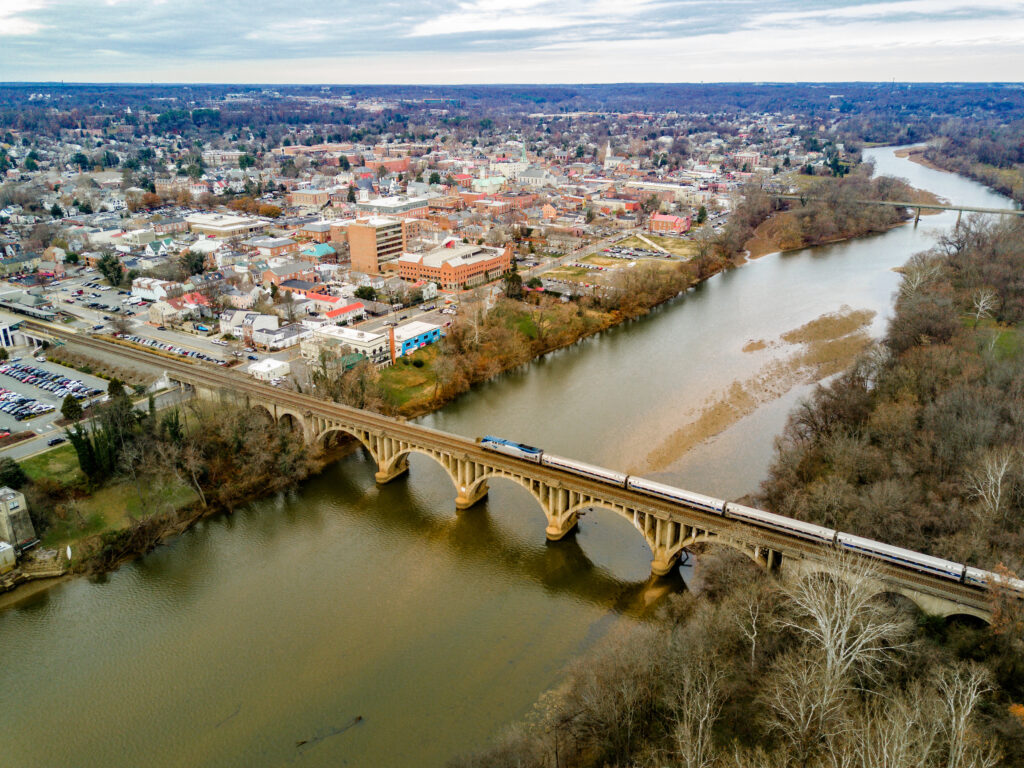
America’s Most Endangered Rivers ® of 2025: Ten rivers at a crossroads
- Mississippi River: The lifeline of America faces an uncertain future as FEMA’s role in floodplain protections and infrastructure maintenance hangs in the balance.
- Tijuana River: Severe sewage and chemical pollution threaten communities on both sides of the US-Mexico border.
- Rivers of Southern Appalachia: Extreme weather is testing the limits of aging dams while hurricane recovery efforts struggle to keep pace.
- Passaic River: Historical industrial pollution continues to impact this essential New Jersey waterway.
- Lower Rio Grande: A mega-drought combined with outdated water management threatens this crucial border river.
- Rappahannock River: Declining groundwater levels and explosive growth from data centers are creating a perfect storm for water insecurity.
- Clearwater River Basin: Some 700 miles of potential Wild and Scenic River protections are at risk of being lost.
- Susitna River: Road construction and mining threaten one of Alaska’s most pristine waterways.
- Calcasieu River: Toxic and heavy metal pollutants endanger this Louisiana river system.
- Gauley River: Strip mining in the headwaters is introducing toxic pollution to this beloved recreational waterway.
Making a difference together
The America’s Most Endangered Rivers ® campaign has a track record of success. It galvanizes the public to speak up on behalf of the rivers, gets the attention of decision makers, and creates positive change. Together with partners, we have helped stop pollution in the Buffalo National River and prevented harmful mining in fragile ecosystems like the Boundary Waters. The campaign played an important role in protecting Wyoming’s beautiful Hoback River, and has contributed to dam removal and river restoration efforts on rivers such as the Penobscot, Klamath, and Eel.
You can help turn this year’s endangered rivers into success stories. We need your voice for America’s Most Endangered Rivers ® of 2025. Learn more about the rivers, and take action today.
This year marks an important milestone for America’s Most Endangered Rivers®— the 40th anniversary of the campaign that combines years of environmental action and grassroots mobilization. Each year, this campaign has highlighted ten rivers whose fate depends on the decisions we make today. Over the decades, together with our partners, we’ve achieved significant changes to protect our rivers and the communities that depend on them.
However, this anniversary isn’t just a moment to look back and celebrate what we’ve accomplished—it’s also an opportunity to reflect on the road ahead. Over these 40 years, we’ve faced countless challenges, but we’ve also seen victories that continue to motivate us to keep speaking up for the health of our rivers.
As a way to celebrate 40 years of America’s Most Endangered Rivers®, we wanted to highlight some of the most impactful stories; rivers that represent not only the challenges our rivers face but also the solutions we’ve been able to achieve through our collective efforts.
New Mexico’s Rivers: A Hopeful Future
2024 #1 River Listing
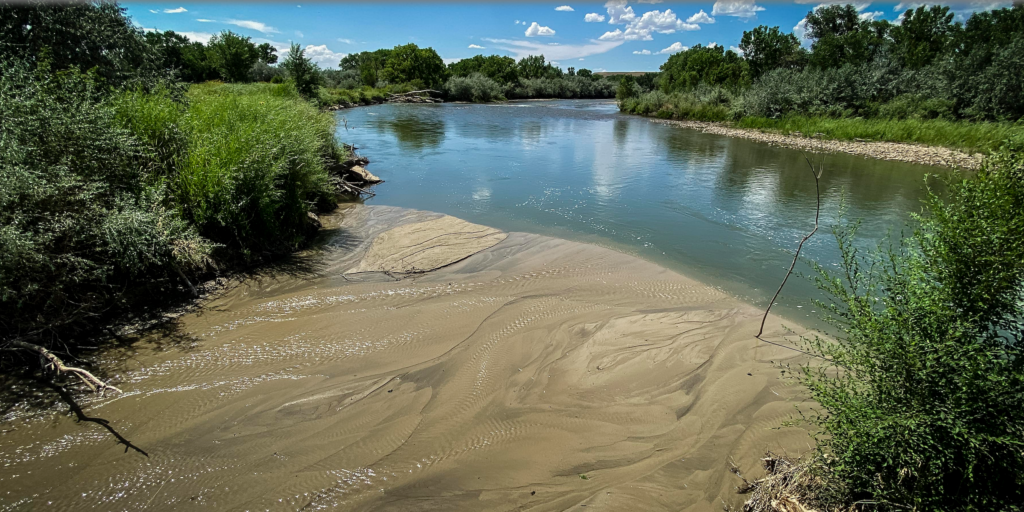
In 2024, New Mexico’s rivers were highlighted as the #1 most endangered due to threats facing nearly all streams and wetlands in the state, particularly the loss of Clean Water Act protections. This left the state’s waterways at risk of pollution from industrial runoff and agricultural waste, posing a danger to the local communities and ecosystems that rely on them.
But just last week, New Mexico Governor Michelle Lujan Grisham signed a bill to restore clean water protections that creates a state surface water permitting program to ensure the state’s precious water resources have the proper management and safeguards.
Neuse River: A Turnaround Story
Listed in 2017, River of the Year 2022
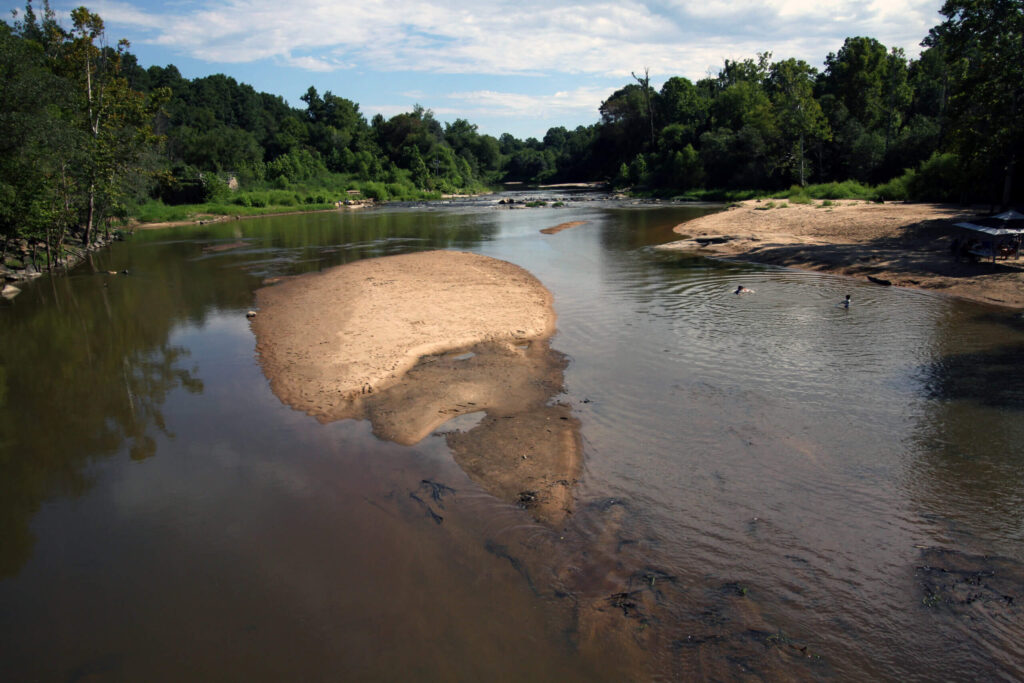
When the Neuse River was listed among America’s Most Endangered Rivers® of 2017, it faced threats from industrial agricultural waste being dumped into its floodplains. This was a river that, for decades, has been a vital water source for communities in eastern North Carolina, but its future seemed uncertain.
Inclusion in America’s Most Endangered Rivers® sparked action and amplified community engagement to honor the progress and to support forward momentum, we named the Neuse “River of the Year” in 2022. Local advocates and communities continue to push for improvements to keep the Neuse River on a positive trajectory.
Klamath River: A Milestone in River Restoration
Listed in 2002
The Klamath River, one of the most iconic rivers in the Pacific Northwest, made the America’s Most Endangered Rivers® list multiple times over the years, with four dams devastating river health, water quality, salmon runs, and a vital source of sustenance and cultural heritage for the river’s tribes. The Yurok, Karuk, Klamath, and other Tribes and Indigenous communities advocated tirelessly for river restoration. Last year, dam removal was completed and now the river is on a path to recovery. Learn more about the Klamath Dam removals.
Gila River: The Ongoing Fight for Water Security
Listed in 2019
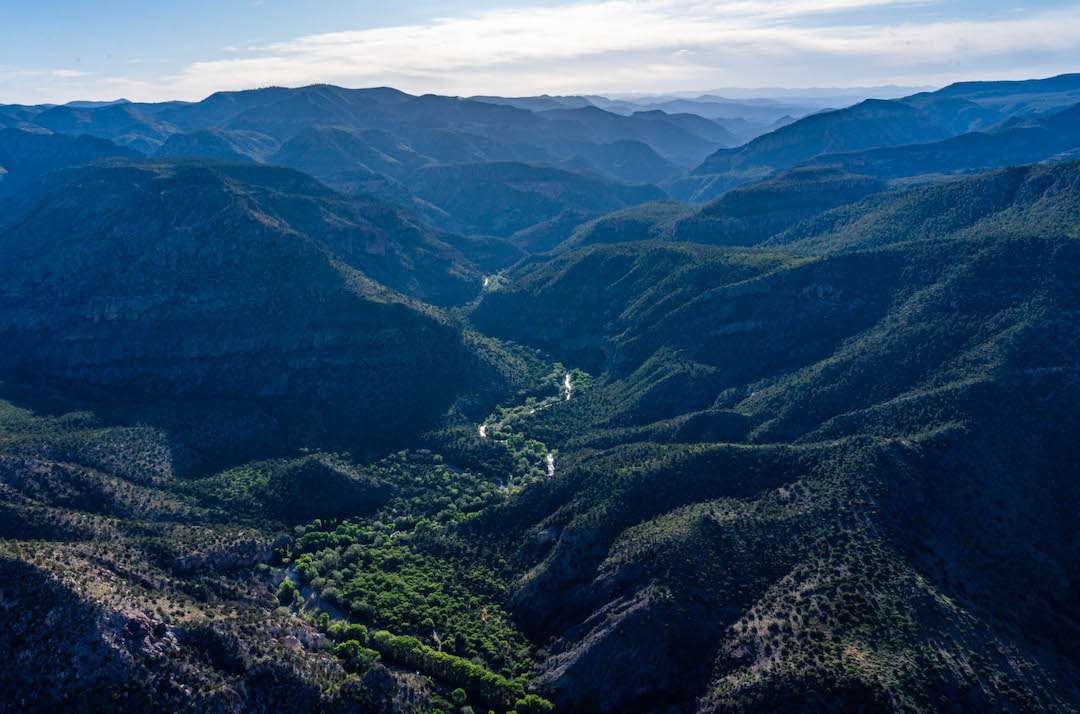
The Gila River, one of the most critical rivers in the American Southwest, was listed among America’s Most Endangered Rivers® in 2019 due to threats from the proposed construction of a damaging water diversion project.
The diversion could have dried up the Gila River, impacted fish and wildlife, the local outdoor recreation and tourism economy, and harmed critical habitat for seven threatened or endangered species. Declining groundwater levels caused by the diversion could also have harmed some of the last remaining intact riparian forest in the Lower Colorado River Basin.
In a win for the river and all who depend on it, in 2020, the New Mexico Interstate Stream Commission voted 7-2 to end work on the Environmental Impact Statement for the Gila River diversion.
Looking Ahead: A Call to Action for 2025
As we approach America’s Most Endangered Rivers® 2025, the work to protect our rivers is far from over. This anniversary not only celebrates the progress we’ve made but also serves as a starting point to redouble our efforts. The rivers and clean water that continue to face threats need our help now more than ever.
Every action counts, and every voice raised has the power to make a difference. I invite you to join us in supporting efforts to protect and restore these endangered rivers, and all of the rivers we depend on nationwide.
Check back on April 16, when we will announce America’s Most Endangered Rivers® 2025!
This is a guest blog written by Alejandra Galindo, American Rivers MAP Fellow. Alejandra is a dynamic Senior Program Manager at Entrepreneurship for All (EforAll), where she spearheads initiatives that empower early-stage entrepreneurs from underserved, low-income, and minority communities. With a passion for inclusive economic development, Alejandra leverages over a decade of international experience to design and implement high-impact programs that drive innovation and opportunity.
Originally from Colombia, Alejandra holds a degree in Political Science and International Relations from Icesi University, an MBA in Finance from EUDE Business School in Spain, and a Strategic Project Management Certificate from Harvard University. Her global education and professional journey have shaped her into a versatile leader with a deep understanding of both grassroots challenges and strategic solutions.
Fluent in both English and Spanish, Alejandra blends her multicultural insight with sharp operational acumen to build bridges between communities, entrepreneurs, and resources. Her work continues to open doors for aspiring business owners, helping to cultivate resilient, inclusive ecosystems where all entrepreneurs can thrive.
I’ve witnessed firsthand the effects and the legacy of unbridled land use on California’s headwaters in the Sierra Nevada. The streams and meadows from which these headwaters feed rivers like the Tuolumne, Merced, American, or Yuba are the lifeblood of California.
Despite their importance, many of these water sources are still recovering from more than a century of exhaustive mining, grazing, and logging that left them degraded, vulnerable, or polluted.
Restoration projects like those at Ackerson Meadow and Faith Valley Meadow help reverse that legacy, but I can’t help but imagine what those places would have looked like if they had been protected in the first place.
On January 14th, 224,000 acres of California’s Sierra Nevada range were designated under the Antiquities Act as the Sáttítla Highlands National Monument. The designation was a great advance in preserving the land, the headwaters, and the vital underground aquifer beneath them — securing a major source of California’s clean water and the heritage of our communities for generations to come.
The aquifer supports millions of Californians, an agricultural industry that is the nation’s largest food supplier, and the world’s 5th largest economy. The volcanic geology of the region allows for the filtration of flows that can stay underground for over two decades before surfacing as clean, fresh, and cold water. It protects the source waters in the ancestral homelands for many Indigenous peoples and provides some of the cleanest water in California that supports not just world-class trout streams, but drinking water sources for millions of people. It is disappointing and antithetical to the goal of improving the nation’s health, wealth, and well-being for the Trump administration to seek to roll back the Sáttítla Highlands National Monument designation.
This designation did not materialize from thin air. Sáttítla Highlands National Monument is a region of immense cultural and historical importance to Tribes including the Pit River, Modoc, Wintu, Karuk, Klamath, Yana, and Shasta, that have resided in the area for time immemorial. The monument came from an effort initiated in the 1990s by the Pit River Tribe that grew into a coalition of Tribes and organizations who understood the need to protect this area from future development.
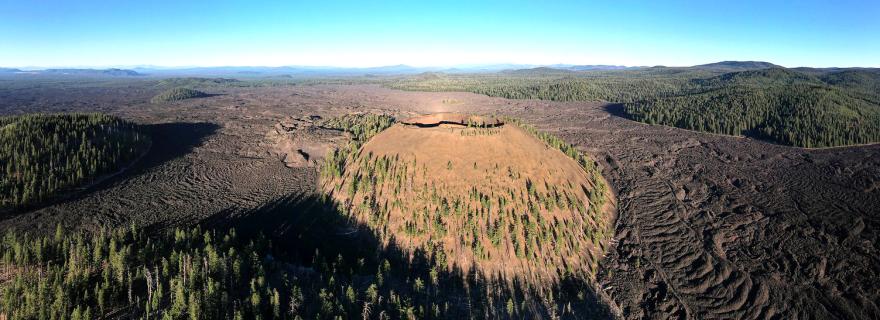
For decades, former presidents have used the Antiquities Act to preserve and protect lands and water sources for the betterment of our nation, with more than 100 having been created since the turn of the century.
The value of national monuments extends beyond the ecological. Much like national parks, national monuments are a net positive in economic terms, a strong investment in the state and communities near the monument that creates jobs for the surrounding region driven by increased tourism as well.
In an era of a changing climate, where snowpack is decreasing and extreme weather patterns are disrupting hydrologic cycles, we need to use every tool at our disposal to support the nation’s water wealth and the people and wildlife that depend on it. That includes restoration efforts like meadow restoration, sustainable, climate-smart forest management as well as federal protections.
Simply, the Sáttítla Highlands is exactly the kind of protected place from which everyone benefits. It is a win for people, a win for nature, a win for job creation and our pocketbooks, and an important win for our cultural history.
Late last year on a chilly, rainy day, a diverse group of municipal water staff, elected officials, and environmental advocates braved the gloomy weather to gather at the Joint Forum on Falls Lake, hosted by the UNRBA and NC Department of Environmental Quality. The focus? Revisiting nutrient management rules to protect Falls Lake, a drinking water source and recreational gem for the Triangle region. Despite the complex and technical nature of the discussions and the driving rain outside, the room buzzed with energy. Over 70 attendees shared a common goal: build on the success of integrated water management in the Upper Neuse River Basin to advance One Water principles in the Neuse River and beyond.
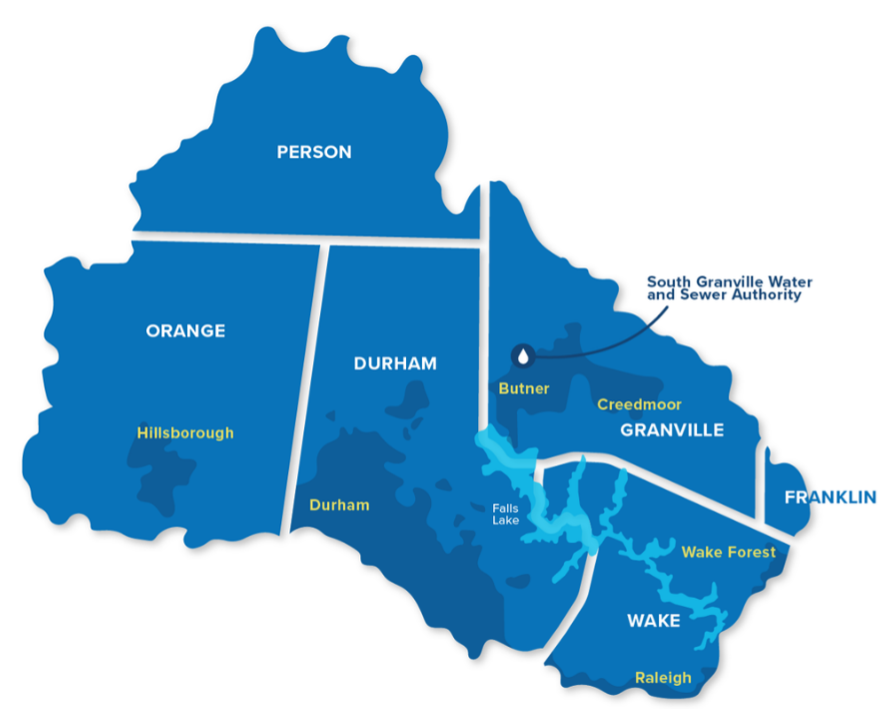
What is One Water?
One Water is a holistic strategy for managing all water resources—surface water, groundwater, stormwater, and wastewater—as a single, interconnected system. This approach emphasizes collaboration among stakeholders, sustainable infrastructure, and equitable water access. Integrated Water Management (IWM) is the set of practices that turn One Water principles into action, balancing environmental sustainability, economic growth, and public health.
North Carolina’s Neuse and Cape Fear Rivers: Where and what to know
Stretching nearly 6,000 square miles, the Neuse River Basin connects North Carolina’s fast-growing Piedmont region to the state’s Coastal Plain before emptying into Pamlico Sound, a vital local fishery that supports both livelihoods and recreation. However, the basin is under pressure from nutrient pollution, algal blooms, and increased sedimentation—threats that endanger water quality and aquatic life.

The Upper Neuse River Basin, home to Falls Lake, supplies drinking water to much of the Raleigh metropolitan area but faces challenges from stormwater runoff, urban expansion, and nutrient overload. Without proactive management, these pressures could compromise the region’s ability to provide clean, reliable water for residents.
Similarly, the Jordan Lake watershed, primarily fed by the Haw River, is a crucial water resource for central North Carolina before flowing into the Cape Fear River and ultimately the Atlantic Ocean. Yet, Jordan Lake struggles with excess nutrients, stormwater pollution, and sedimentation, making it imperative to adopt collaborative water management strategies to maintain its role as both a regional water supply and an ecological treasure.
American Rivers: Driving Nationwide Change
American Rivers is a national leader in promoting One Water strategies. In North Carolina, we are championing policies that support green infrastructure, equitable water access, and climate resilience. By integrating science-based solutions and forward-thinking policy changes into regional water management efforts, American Rivers strengthens initiatives like JLOW and UNRBA, ensuring that communities throughout the Neuse and Cape Fear watersheds benefit from sustainable, collaborative water resource management.
JLOW exemplifies the One Water approach by bringing together local governments, industries, conservation groups, and residents to implement cost-effective, mutually beneficial water solutions. These efforts include climate-resilient infrastructure projects, stormwater management innovations, and ecosystem restoration initiatives. By fostering collaboration across jurisdictions, JLOW helps secure the region’s water future while positively impacting downstream communities, including those in the Cape Fear River Basin.
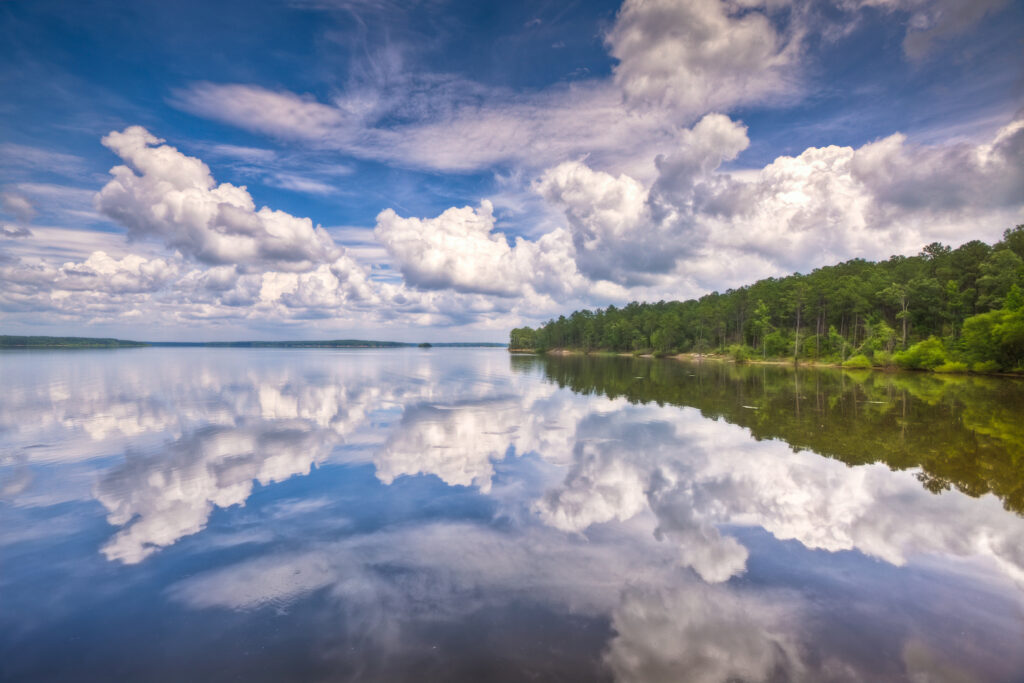
Similarly, UNRBA applies One Water strategies to address critical water challenges in the Upper Neuse River Basin. Through data-driven decision-making and multi-stakeholder partnerships, the association works to reduce nutrient pollution and mitigate stormwater impacts through an innovative joint investment-based compliance strategy that funds water quality projects with community benefits.
By embracing the One Water approach, North Carolina’s water leaders are creating a model for other regions across the country. These efforts not only safeguard vital water resources but also strengthen communities and economies.
One Water holds the key to solving our most pressing water challenges. By fostering collaboration and breaking down traditional management silos, we can ensure abundant, clean water for generations to come—one watershed at a time.
On February 8, project partners from the Rheem Creek Flood Risk Reduction project gathered alongside neighbors to celebrate the completion of a project initiated in 2019, an effort led by the City of Richmond alongside American Rivers, Contra Costa County, Urban Tilth, The Watershed Project, and Restoration Design Group. I walked in to find tables arrayed with family-friendly activities; coloring books for the local kids, plant identification guides, and storybooks. Sitting at those tables were project partners, local representatives, and community members, talking, smiling, and enjoying a day in the sun. Past the tables a gate opened up onto recently restored Rheem Creek, with woody mulch lining the tops of the banks, saplings planted along the steep banks of the creek, and flows nowhere near the top of the bank. The project is doing its job!
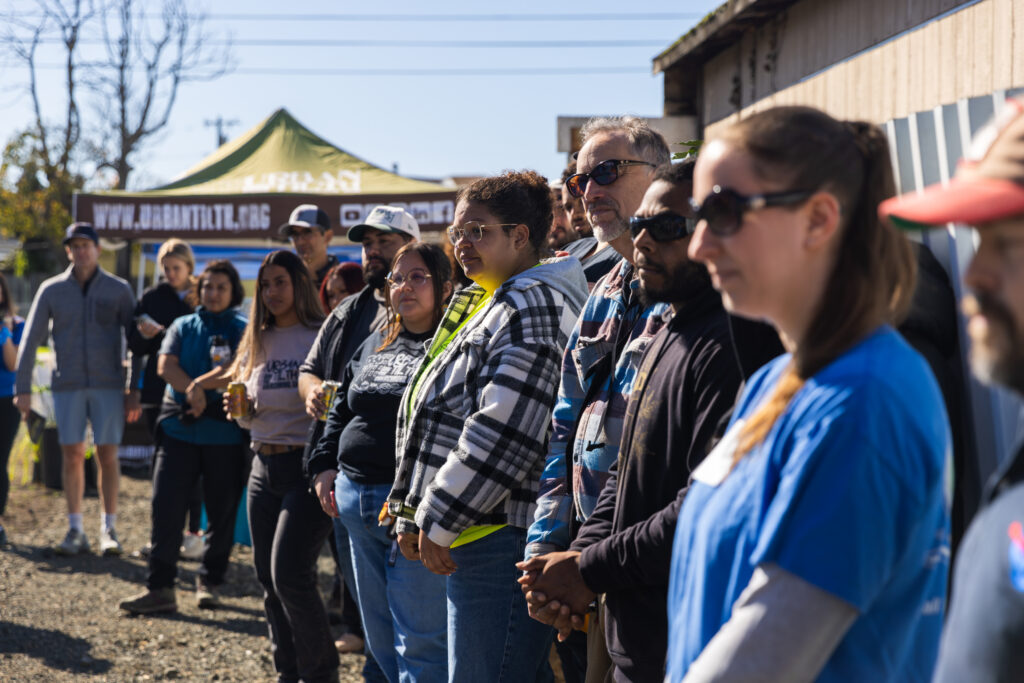
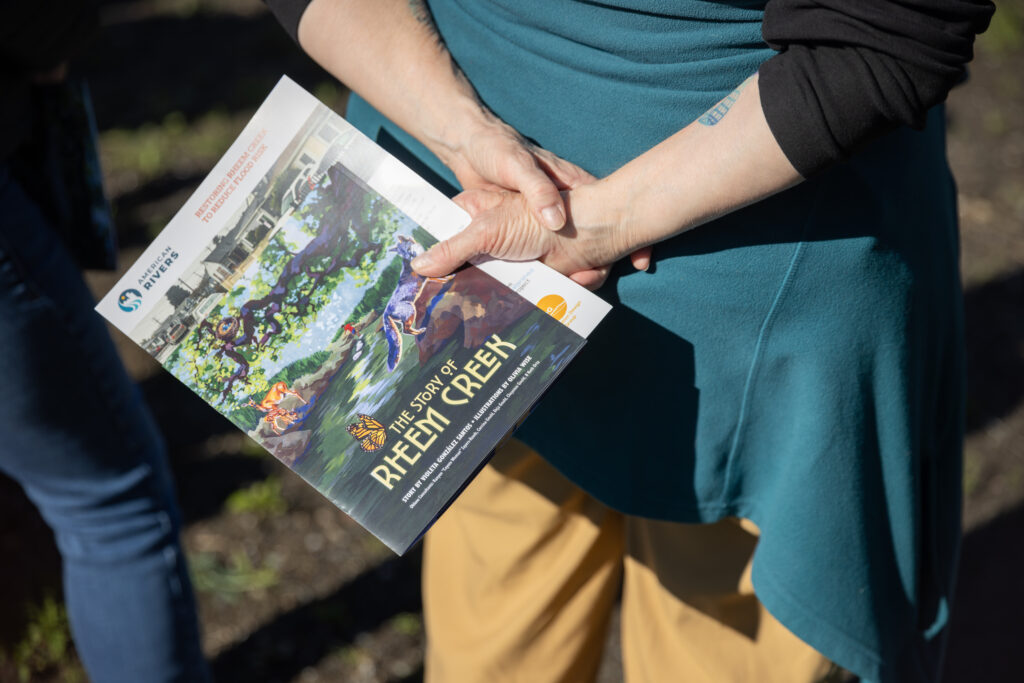
In December, an atmospheric river pummeled Northern California, bringing with it heavy rainfall. But if you were in the Rollingwood neighborhood in Western Contra Costa County, you probably didn’t need to bring your rainboots. For two decades, residents had been dealing with flooding as Rheem Creek, which was choked with nonnative vegetation, sediment, trash, and other obstructions, overtopped its banks and spilled out into the streets. Drainage pipes flowed in the opposite direction and homes were flooded and damaged. But this past December, after the construction phase of the project funded by the CA Natural Resources Agency had concluded, Rheem Creek flowed safely and swiftly through the backyards of its neighbors.
Myself and others from the project team joined the neighborhood on a mild winter day as those who were instrumental to this project were recognized for their hard work and success. It had rained the previous weekend, and it was exciting to see how a weather event that would have flooded the streets before this project was implemented had already drained out of the watershed by the time we arrived. Instead of residents scrambling to protect their homes, we could share a warm, sunny day full of laughter, excitement, and wonderful conversation centered on the Rollingwood community.
The Rheem Creek Flood Risk Reduction project is a great example of how bringing people together can serve the community, and how urban creek restorations can transform from an idea into a reality. The project site transects numerous residential properties in the City of Richmond, and impacted homes and streets in unincorporated Contra Costa County, so bringing it to life took creativity, cooperation, and input, combining the dedication and leadership of the City of Richmond, Contra Costa County, the expertise and experience of multiple environmental nongovernmental organizations, and the input of the community to create a positive change for a neighborhood that has been dealing with the effects of a changing climate. And the project isn’t a “one and done” effort. We are currently collaborating with our project partners, including a coalition of community members, to monitor and maintain the creek over the next two years and to help the community maintain the creek in the long term.
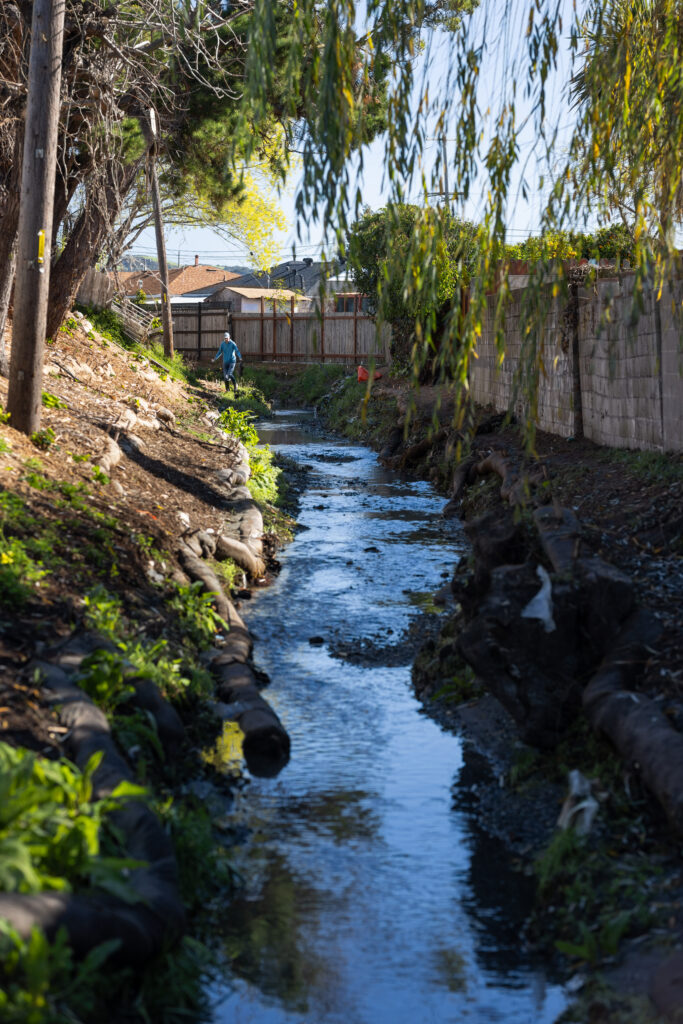
And this important work continues elsewhere! American Rivers is looking towards more urban creek restoration across the cities of Northern California, with projects initiated in Sacramento, Brentwood, and Stockton. The work at Rheem Creek is important in its own right, but also serves as a model for how to bring greenspace and all the benefits of flood risk reduction to the communities that need it.
As the leaves turn golden, it’s easy to feel a shift in our moods. While the changing seasons bring beauty, they can have an impact on our mental well-being. Winter can be a challenging time for mental health, with shorter days and colder temperatures often leading to feelings of loneliness and depression. But there’s a powerful antidote to these winter blues — nature!
Research has shown that spending time in nature or green spaces can significantly improve mental health, reduce stress, and even alleviate symptoms of depression. In recent years, medical professionals have emphasized the mental health benefits of spending time outdoors in green spaces. Studies suggest exposure to nature can have profound effects in reducing stress, depression, anxiety, social functioning, and self-esteem. Yet, proximity to green spaces or riverfronts isn’t accessible for everyone. A report by the Hispanic Access Foundation found that communities of color are nearly three times more likely to have less access to open green spaces compared to white communities.
Development and land use decisions have often prioritized profit over protecting the environment, leading to polluted rivers and fewer natural areas for communities of color to enjoy. In many neighborhoods, parking lots and retail spaces have replaced trees and parks, and urban streams are polluted. Like many urban waterways, the Grand Calumet River in Indiana, a once-natural asset, has suffered from heavy pollution due to steel industry pollutants like polychlorinated biphenyls (PCBs), polycyclic aromatic hydrocarbons (PAHs), heavy metals, other industrial toxins, and untreated sewage continue to severely degrade the environment.
This contamination leads to beach closures, fish tumors, and deformities, restrictions on fish and wildlife consumption, and loss of fish and wildlife habitat.
As an urban resident, I understand firsthand how disconnected city life can feel from nature—it often seems like a distant destination requiring a commute or trip. However, there’s a growing movement to invest in river restoration and restore nature in urban spaces. The idea of reclaiming nature in urban spaces-especially in nature-deficient neighborhoods—inspires my work with communities to creatively invest in and reimagine urban spaces through natural infrastructure. By incorporating natural amenities like trees and gardens, we not only improve water quality, mitigate flooding, and reduce air pollution but also have positive public health benefits.
However, communities of color and low-income communities often face significant barriers in accessing natural areas, beaches, riverfronts, and green spaces. According to the Nature Gap, families with children, especially families of color with children, have less access to nearby nature than the rest of the country. American Rivers is working alongside communities of color to identify opportunities to incorporate natural features and develop funding strategies to implement them. For example, the Rivers of Opportunity tool supports communities in reducing the nature deficiency experienced in communities of color and ensuring a clean water future for everyone. Our new online dashboard Lake Michigan Funding Resiliency Dashboard is helping Great Lakes communities identify funding for nature-based projects that provide community benefits and strengthen resilience.
Recognizing the negative impact of environmental disparities such as limited access to nature, poor air quality, and polluted rivers on emotional, physical, and psychological well-being, I sought to learn firsthand how nature influences mental health – specifically in a community burdened by environmental pollution. Can exposure to natural spaces be a “cost-effective public health intervention” in promoting mental wellness? This is particularly relevant in regions like the Great Lakes, where an abundance of rivers and lakes offers opportunities for improving mental well-being through access to nature. I was curious about how spending time near rivers or in parks can improve our mental health, so I spoke with Dr. Tifany Jamison (“Dr. Tif”) to learn more.
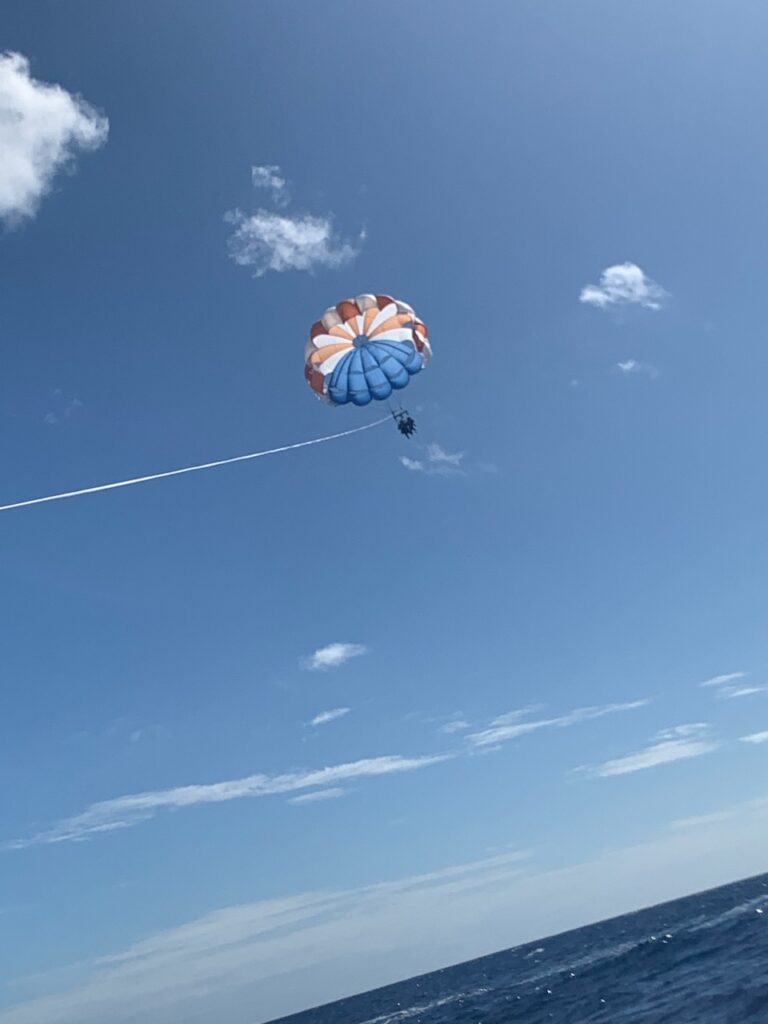
As a nurse practitioner serving Lake County Indiana, at Solace Health Solutions, LLC Dr. Tif is dedicated to improving the well-being of her patients. Lake County, located along Lake Michigan’s southern shore presents a mix of urban, suburban, and rural landscapes. Originally inhabited by the Potawatomi, the region is known for its sand dunes, steel mills, and proximity to Chicago. Known for a strong work ethic and blue-collar roots, the area faces economic hardship, as evidenced by higher poverty rates and a median household income 30% below the national average. Beyond the economic challenges, the community has been burdened by the legacy of pollution from the steel industry, which has contributed to increased health risk, including elevated rates of asthma, cancer, and other respiratory diseases. It is precisely this context that makes Dr. Tif’s dedication to uplifting her community and fostering well-being so vital.
When not providing direct patient care, Dr. Tif volunteers her time to facilitate an urban agriculture program led by Black youth. This program empowers young people through place-based learning, equipping them with new skills and knowledge about wellness and environmental sustainability. Recently, Dr. Tif shared exciting news about a new initiative with her place of worship to offer mental health workshops for Black/African American men and women in the community. Despite her busy schedule, Dr. Tif remains passionate about sharing her insights on the therapeutic powers of nature for mental wellness and healing.
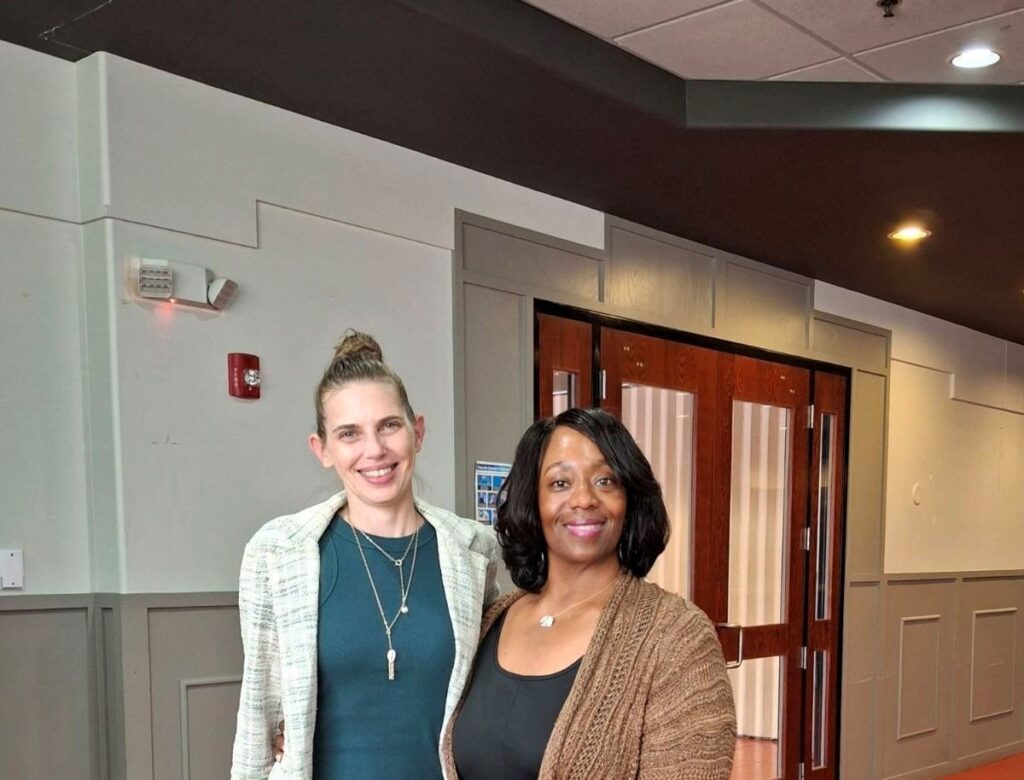
As we settled into our conversation, we couldn’t help but comment on the unusual weather this autumn. The uncharacteristic warmth for the Great Lakes region this time of year is a pleasant surprise, providing more opportunities to get outdoors. This led us to the topic of the day: the benefits of nature and mental health.
SV: Does, spending time in nature help reduce stress and anxiety? How?
Dr. Tif: When I think about walking near water, at the park, or even sitting on a bench at the beach, there is something calming that urges your body to relax which significantly reduces cortisol levels – a hormone associated with stress.
SV: Spending time outdoors, under the shade of trees and near calming waters, always makes me feel happy, but scientifically nature provides mental health benefits? Tell me more…
Dr. Tif: Absolutely! Spending time near water can be incredibly soothing. It’s a simple yet powerful way to reduce stress and promote relaxation. When we’re near water, our senses are engaged: the gentle breeze, the soothing sounds, the beautiful sights. These stimuli can trigger a relaxation response in our bodies, slowing our heart rate and easing muscle tension. It’s a simple yet powerful way to reduce stress and improve our overall well-being.
It’s no surprise that water holds a special place in our lives, given that we are primarily composed of water. The rhythmic sound of water can be incredibly therapeutic, acting like a natural lullaby that eases tension and promotes relaxation. It’s a simple yet powerful way to recharge and rejuvenate.
SV: What other natural mood boosters does nature hold? What about people that suffer from depression?
Dr. Tif: Isolation can exacerbate feelings of loneliness and depression, particularly during the winter months. Spending time outdoors, like going for a walk in a park or a forest, significantly improves our mental well-being and shake off those winter blues. Sunlight, for example, increases serotonin levels, a neurotransmitter associated with happiness. A simple outdoor walk, surrounded by the calming hues of nature – blues, yellows, and oranges – can foster a profound sense of peace and tranquility. In fact, incorporating mindfulness techniques, like meditation or yoga, into your outdoor experiences can further enhance the calming and restorative effects of nature. Additionally, encountering other people on trails and in parks can provide opportunities for social interaction and a sense of connection
SV: That’s a great point! The therapeutic benefits of spending time in nature are undeniable.
Dr. Tif: Exactly! Nature promotes both mental and physical well-being. Physical activity, especially when combined with nature exposure, offers a powerful boost to mental health. Activities like hiking or biking not only get our bodies moving but also release endorphins, natural mood elevators.
SV: I’ve come across research suggesting that exposure to nature can increase attention span and even benefit individuals with ADHD. Is there any truth to it?
Dr. Tif: Yes, nature has a remarkable ability to improve focus. By tuning into the natural world and engaging our senses – sight, sound, touch, and smell – we can become fully present in the moment. This heightened awareness can improve our focus, reduce stress, and enhance our overall well-being. This, in turn, restores our attention span and promotes a sense of calm. Even simple activities like sitting by a body of water can be incredibly therapeutic. The vastness of the water can paradoxically help us focus on our immediate environment, allowing us to concentrate on specific tasks.
SV: I’m not a huge fan of the cold, so I tend to stay indoors during the winter. Any tips for getting outdoors even when it’s chilly?
Dr. Tif: If the weather permits, even on moderately cold days, I encourage people to bundle up and spend at least 15 minutes outdoors. Fresh air and sunlight can do wonders for your mood and energy levels. Even a short amount of time spent outdoors or in a green space can make a significant difference in your mental and physical health
When it’s too cold to be outside, Dr. Tif suggested I consider alternative options:
- Indoor Green Spaces: Visit botanical gardens, greenhouses, or zoos. These places offer opportunities to connect with nature, even during the winter months.
- Volunteer: engage with a nearby urban farm or community gardens. The social interaction and physical activity can be incredibly beneficial.
- Indoor Plants: Bringing plants indoors can improve air quality and boost mood.
- Artificial Light Therapy: If you’re struggling with seasonal affective disorder, consider using a light therapy box to mimic natural sunlight.
SV: “Thank you so much for sharing your insights with us, Dr. Tif, Before we wrap up, I’d love to know: What’s your favorite outdoor space to unwind and recharge?”
Dr. Tif: My favorite place to unwind is near a body of water – specifically Lake Michigan. It provides a sense of calm and focus, allowing my mind to wander freely. The sound of water invites me to pause and appreciate the beauty of nature. It’s a place where I can feel a spiritual connection to the world around me, humbled by its vastness and complexity.
Nature, particularly bodies of water like rivers, offers us a vast, natural pharmacy. By simply being near water or engaging in nature, we can experience numerous physiological and psychological benefits. The calming sounds of flowing water, the fresh air, and the beauty of natural landscapes can reduce stress, improve mood, and contribute to improved mental and physical health.
My conversation with Dr. Tifany Jamison sparked a strong interest in how I can better incorporate nature into my daily life to improve my mental well-being. I left our discussion about the mental health benefits of nature with three key takeaways:
- The calming effect of nature can reduce stress
- Rivers, parks and forests are mood boosters
- Nature can enhance mindfulness and support mental clarity
So, what are you waiting for? Get outside and experience the healing power of nature!
A healthy river system isn’t static. The flow of a river changes dramatically over the course of a year. The tremendous energy of the spring freshet or a flood event will move boulders, rocks, and sediment to rearrange pools, riffles, and runs to new configurations. A river system like the Connecticut that flows through the soft sediment laid down over thousands of years meanders and moves around its floodplain. A healthy river system is dynamic and dramatic, and many river critters have evolved to live amidst this energy and change.
One of those river critters is the bank swallow, whose Latin name of Riparia riparia doubles down on this fellow’s connection to rivers. Avid birders living in southern New England may have followed the dramatic late summer murmuration of the tree swallows that congregate by the hundreds of thousands in the river’s estuary to rest and feed before their southern migration. This murmuration has been celebrated by Roger Tory Peterson as one of the most dramatic natural events he ever experienced.
The bank swallow does not attend that particular avian party in the Connecticut River’s estuary. Riparia riparia is also a social species that nests in colonies they seem to prefer smaller and less dramatic but still noticeable gatherings a bit farther upstream on the Connecticut River.
I spend a lot of time on the Connecticut River north of my home in Holyoke, Massachusetts, including many special trips along the stretch between Lemington, Vermont and Lancaster, New Hampshire. This stretch includes many miles of meanders north of the reaches impounded by hydropower dams. There are many places along the entire river to spot bank swallows, but I have had wonderful visits with these tiny birds in this reach. The gradual bends and turns of the meanders are great places to spot bank swallows. The eroding banks created by energy of water moving around the meander curves exposes the soft and friable alluvium that makes the Connecticut River valley soils so productive. It is easy to spot the dozens of small entrance holes to the bank swallow nests as you round a corner. And while the outside of river bends are always eroding, the inside bends usually provide a wonderful beach from which you can sit and watch the aerial ballet. And at certain times of years if you watch the nests carefully you can see the chicks waiting in the doorway for a food delivery from mom (or dad?).
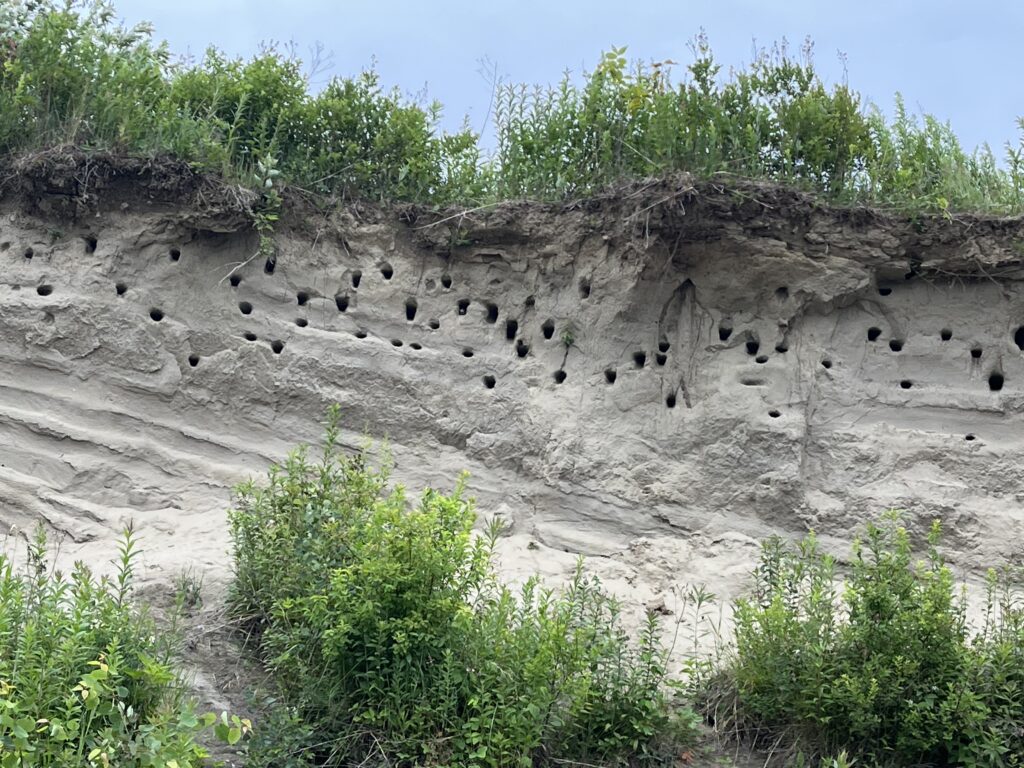
The bank swallows are the smallest species of swallow and have the characteristic angular wing and tail shape of the swallow family with a similar tawny coloration to many of their cousins. They are not as brightly colored as the blue-green of the tree swallow, but they are fetching enough I say. If you have had a chance to stop and watch the bank swallows dart, swoop, dive, and swerve just over the surface of the water you’ve seen these little birds in their glory. Their strength and grace in pursuit of one tiny insect after another is a humbling reminder of the effort these birds make to survive and thrive.
The experts say that the population is healthy, which is good news. Part of the reason for that healthy population is the abundant riverine habitat along the banks of the Connecticut and other alluvial river systems.
That however is a good news / bad news story.
While alluvial river systems like the Connecticut River naturally erode and move and meander around their flood plains, humans have artificially increased bank swallow habitat by cutting down the bankside floodplain forests for agriculture, development, and views. The loss of riparian forests accelerates bank erosion, particularly the loss of the majestic silver maples with root systems able to hold together our friable soils. So while the bank swallows can easily adjust to an eroding bank by digging out a deeper or newer cavity, fixing eroding banks that eat away prime agricultural soils or eventually undermine houses and structures is not an easy fix. A healthy riparian forest allows a river to move at its own pace which creates abundant natural bank swallow habitat while protecting human homes. These little birds with little brains have evolved to succeed with healthy riparian forests.
With our big brains and creativity, we can too.
Here’s to the strength and dynamic energy of the bank swallow, a successful resident of our river valleys. I pay homage to those same characteristics that I see in the many human residents working on behalf of rivers everywhere to make them a better place for everyone and everything.
A version of this blog was first published in the Winter 2024 edition of Estuary, a quarterly magazine for people who care about the Connecticut River; its history, health, and ecology—present and future. Find out how you can subscribe at estuarymagainze. com

